- A great all-rounder with newfound comfort
- Absolutely loaded with standard equipment
- Excellent all-wheel drive system
- Where's the traditional Subaru noise?
- CVT transmission ruins fun and performance
- Not as immature as a WRX should be
We recently attended the launch of the new generation Subaru WRX and found that although there’s been a reduction of driving fun, there’s a newfound level of maturity and refinement to the car. But that was testing the whole range – including the new Sportswagon – so we jumped at the opportunity to test the new WRX in our own testing conditions. Does the top-spec 2022 Subaru WRX tS Sedan have what it takes to continue the legendary WRX name? Let’s find out.
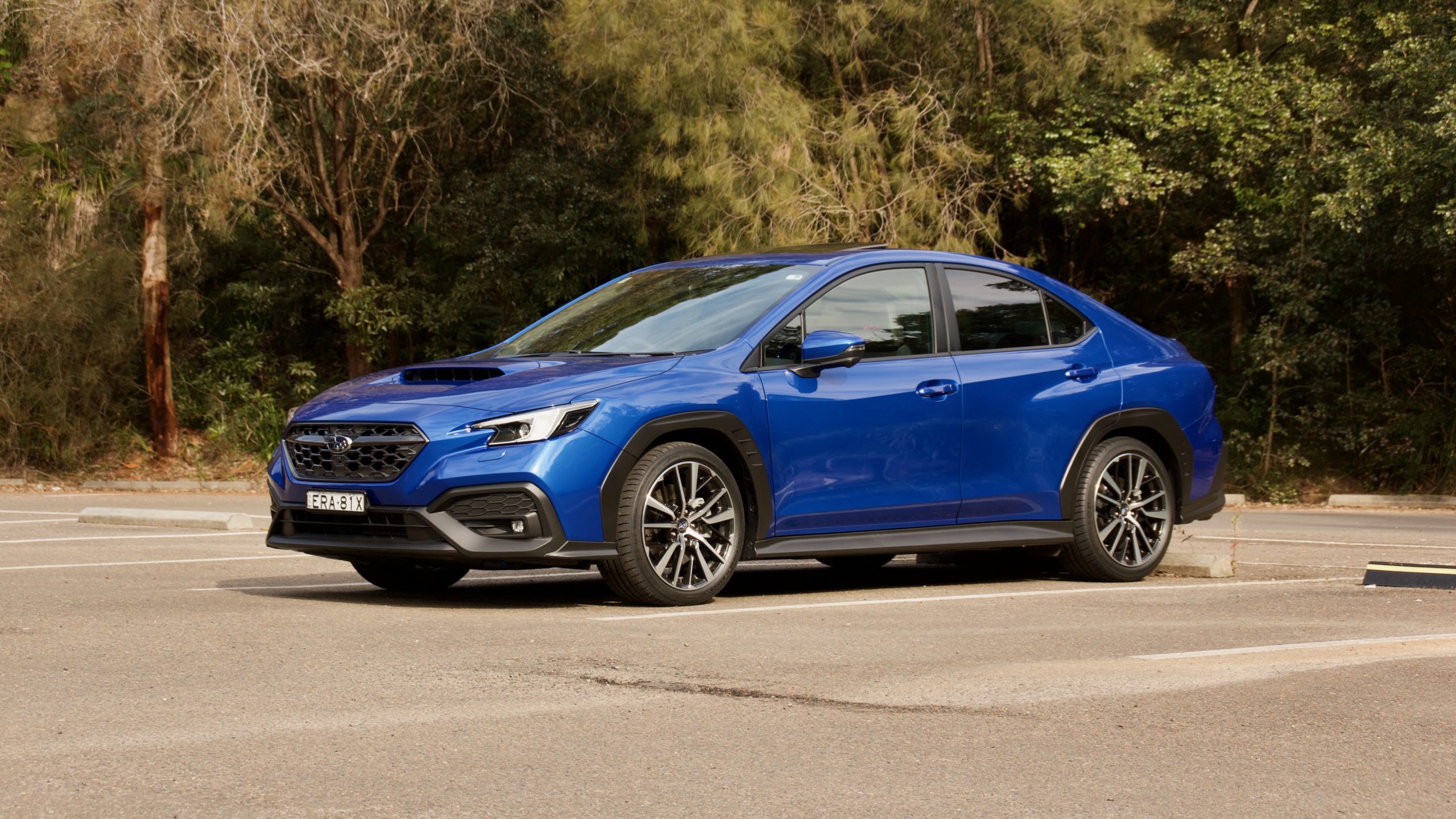
The new generation WRX boasts significant improvements, according to Subaru. There’s a new larger engine, a new transmission, much more technology and more safety equipment than before as well. Prices have risen, predictably, but the WRX remains pretty good value for money in Australia. But is that enough against rivals?
Price & Equipment: 8/10
While there are three WRX trim levels, we tested the top-spec tS sedan, which is priced at $56,990 plus on-road costs (around $63,000 drive away depending on your location).
Standard equipment on the 2022 Subaru WRX includes 18-inch alloy wheels with adaptive dampers, LED lighting with LED front fog lights, auto lights and wipers, suede and leather upholstery, heated front and rear seats, eight-way electrically adjustable front seats with driver’s memory, dual-zone climate control with rear vents, keyless entry and start, heated/auto-dimming/auto-dipping/auto-folding mirrors with puddle lamps, an 11.6-inch portrait touchscreen with wired Apple CarPlay and Android Auto, satellite navigation, digital radio, a 10-speaker Harman Kardon sound system, a CD player, ambient lighting, front and rear USB ports and rear privacy glass.
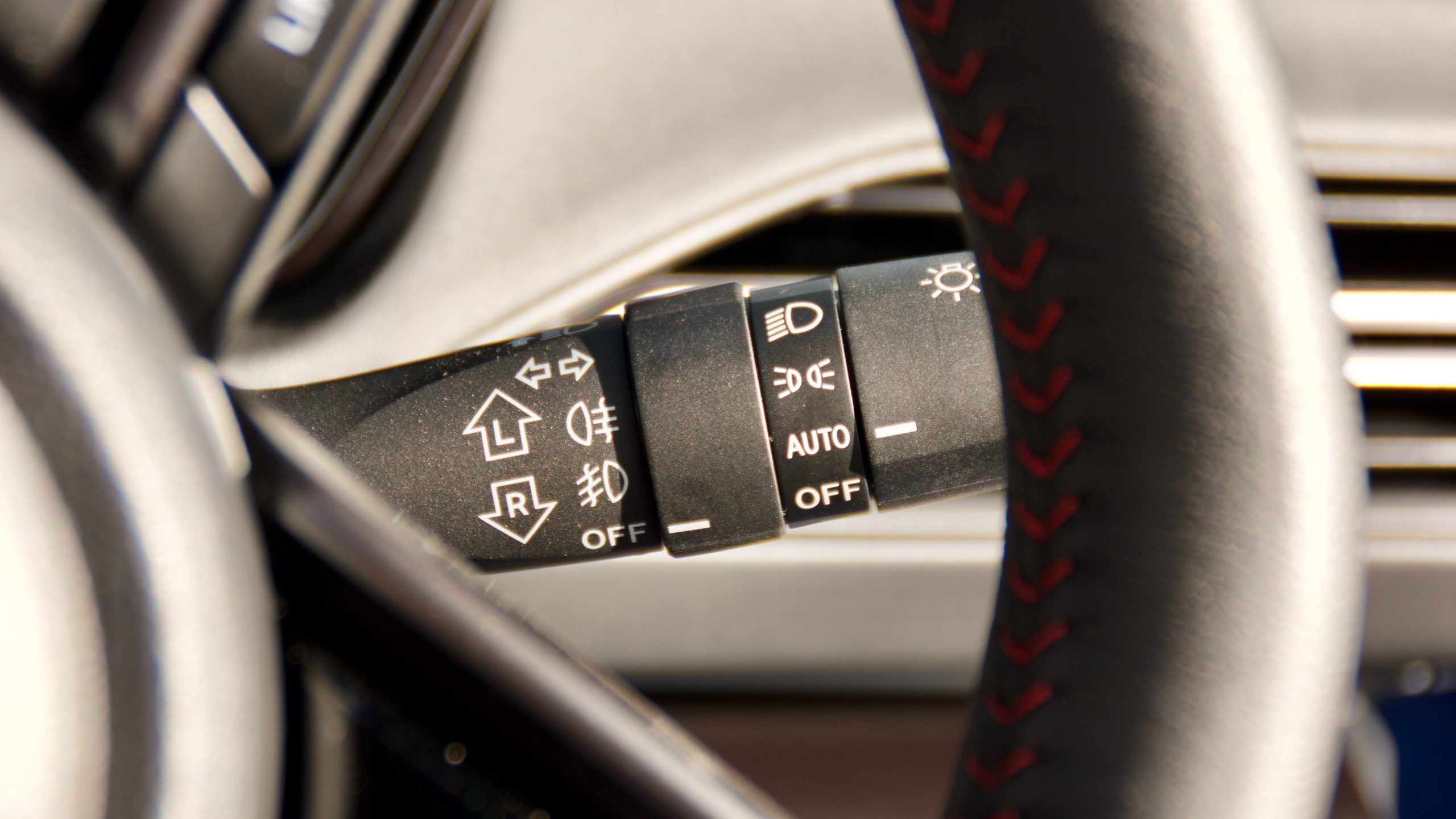
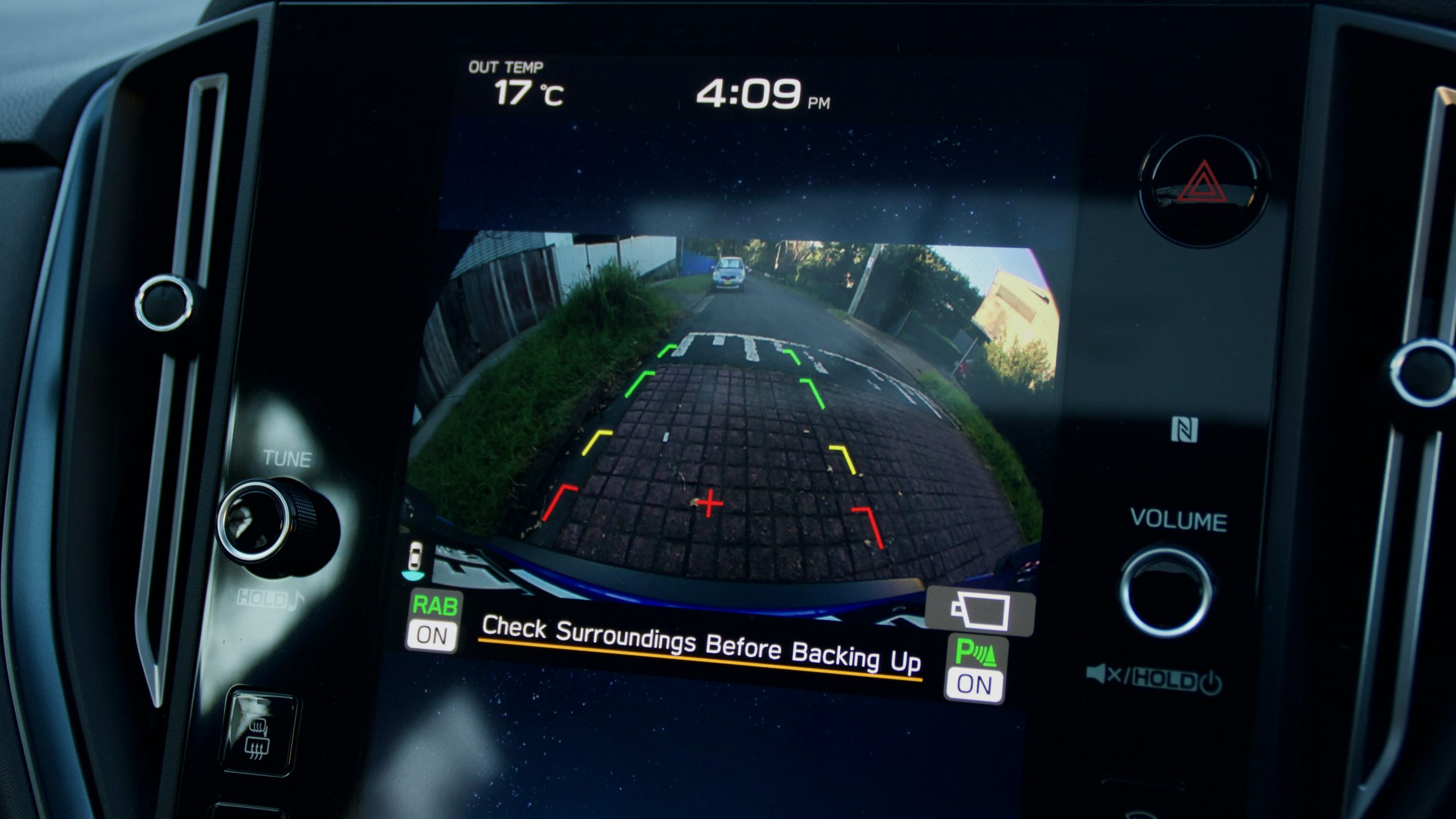
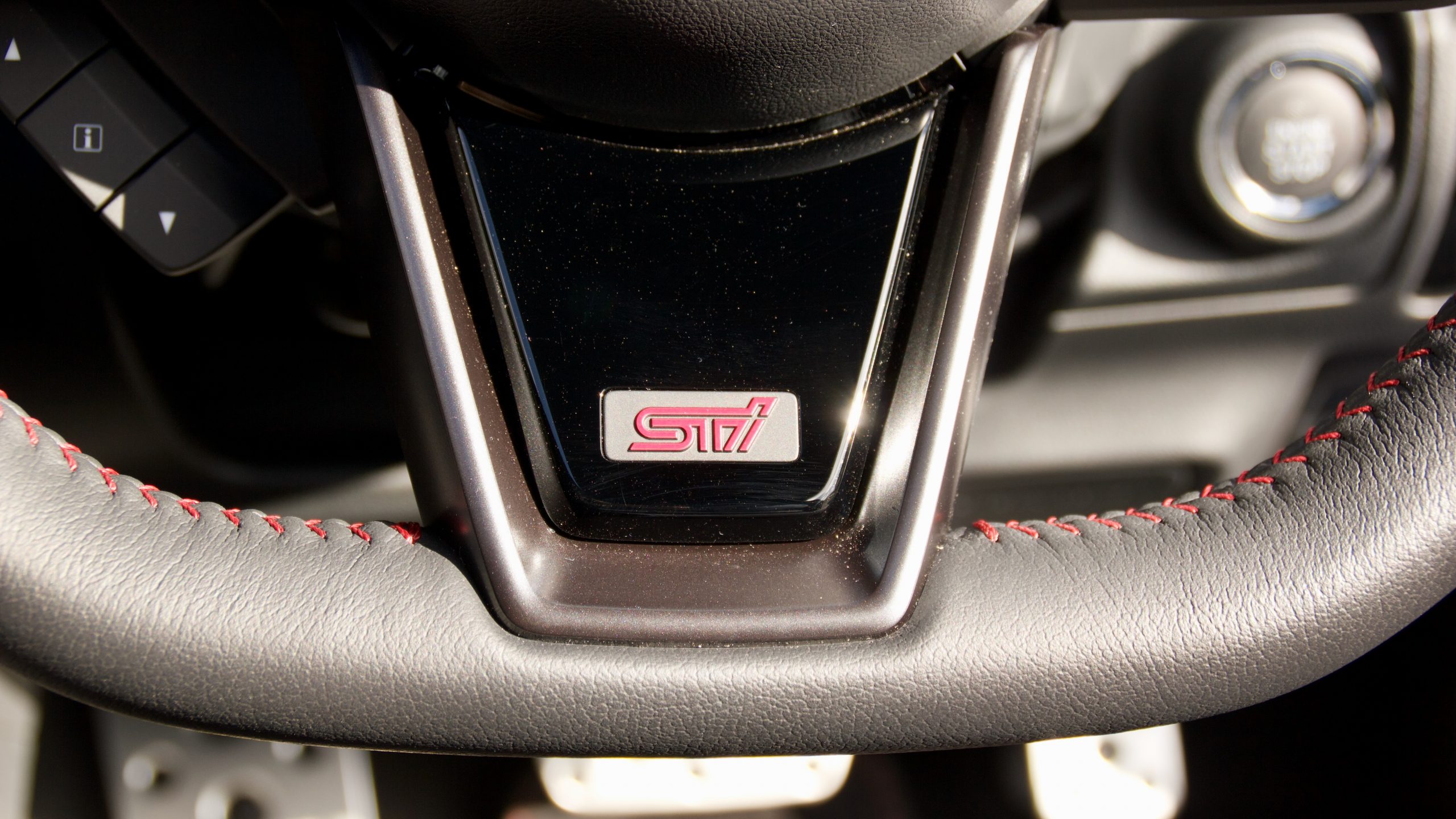
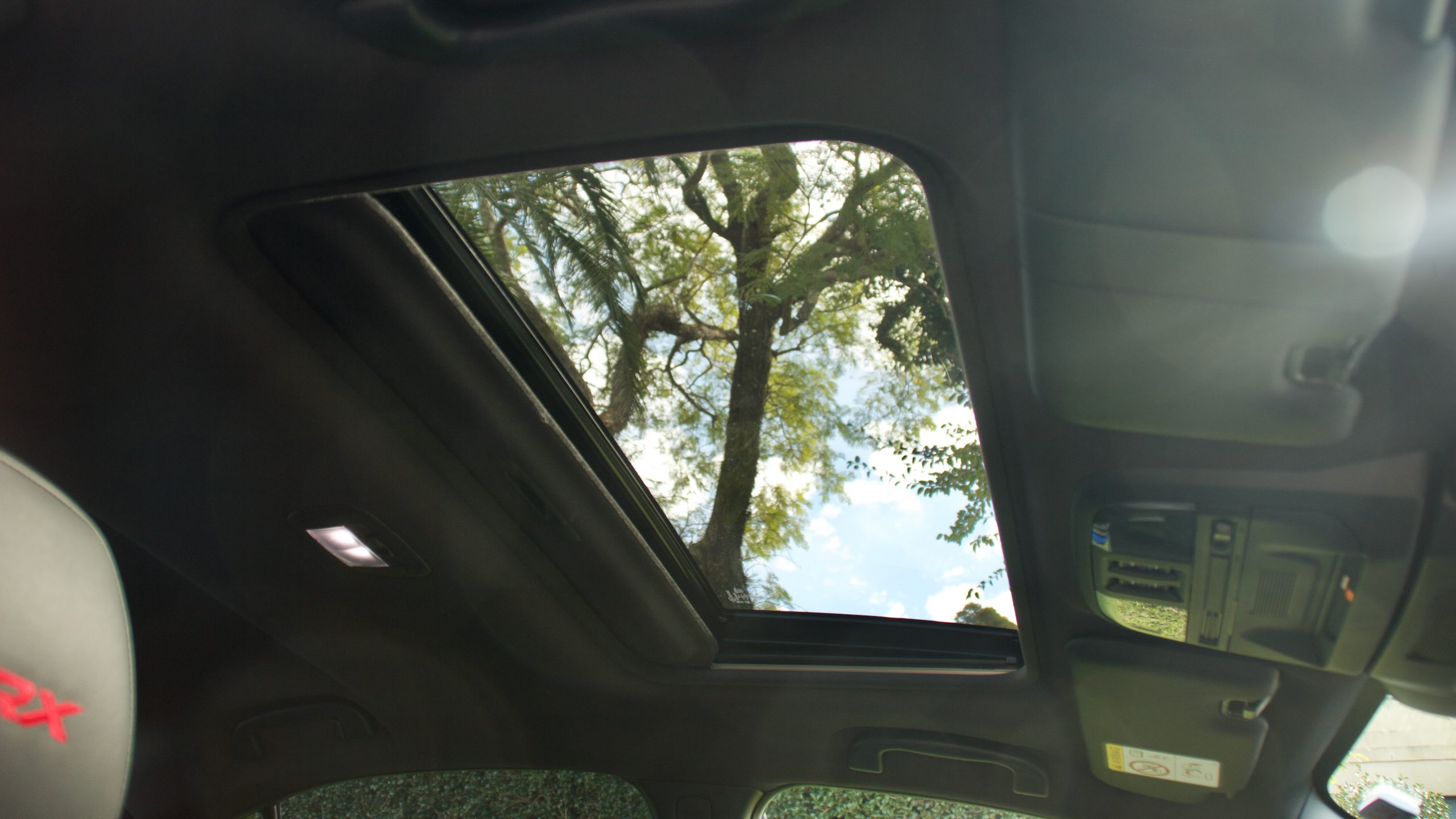
Safety equipment includes eight airbags (including a front centre unit), blind-spot monitoring with rear cross-traffic alert and lane change assist, front, passenger side and reversing cameras, tyre pressure monitoring, auto emergency braking (AEB) with emergency steering, adaptive cruise control with stop and go functionality, lane keep assist, auto high beam, automatic reverse braking, driver attention monitoring with facial recognition, an auto-dimming rear mirror, lane trace assist and traffic sign recognition.
There are a lot of colours available on the new WRX, and all of them come at no extra cost. There’s our test car’s iconic ‘WR Blue’, as well as ‘Ceramic White’, ‘Ice Silver’, ‘Solar Orange’, ‘Ignition Red’, ‘Sapphire Blue’, ‘Magnetite Grey, and ‘Crystal Black’. The sole interior colour is black with STI pink stitching.
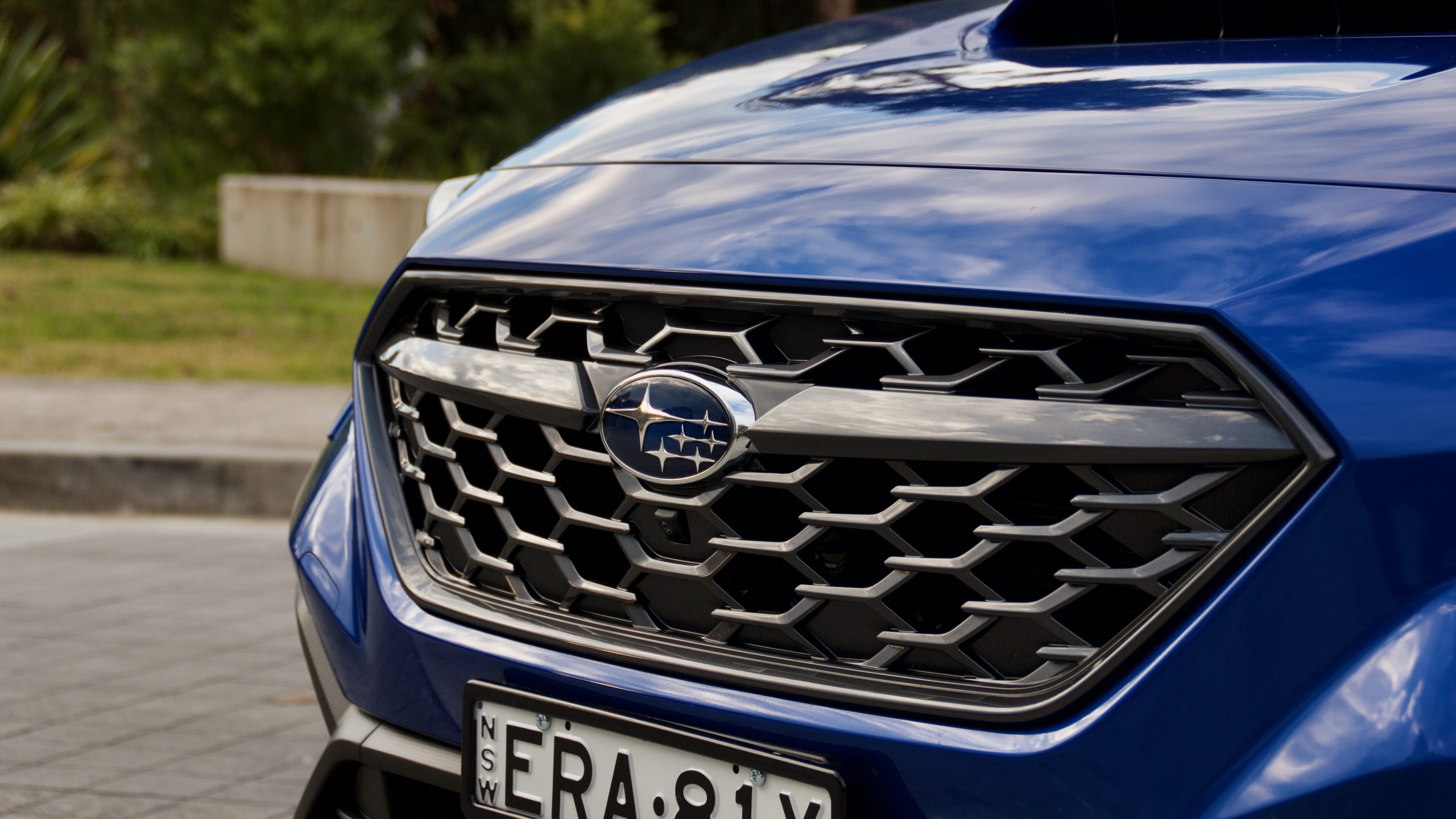
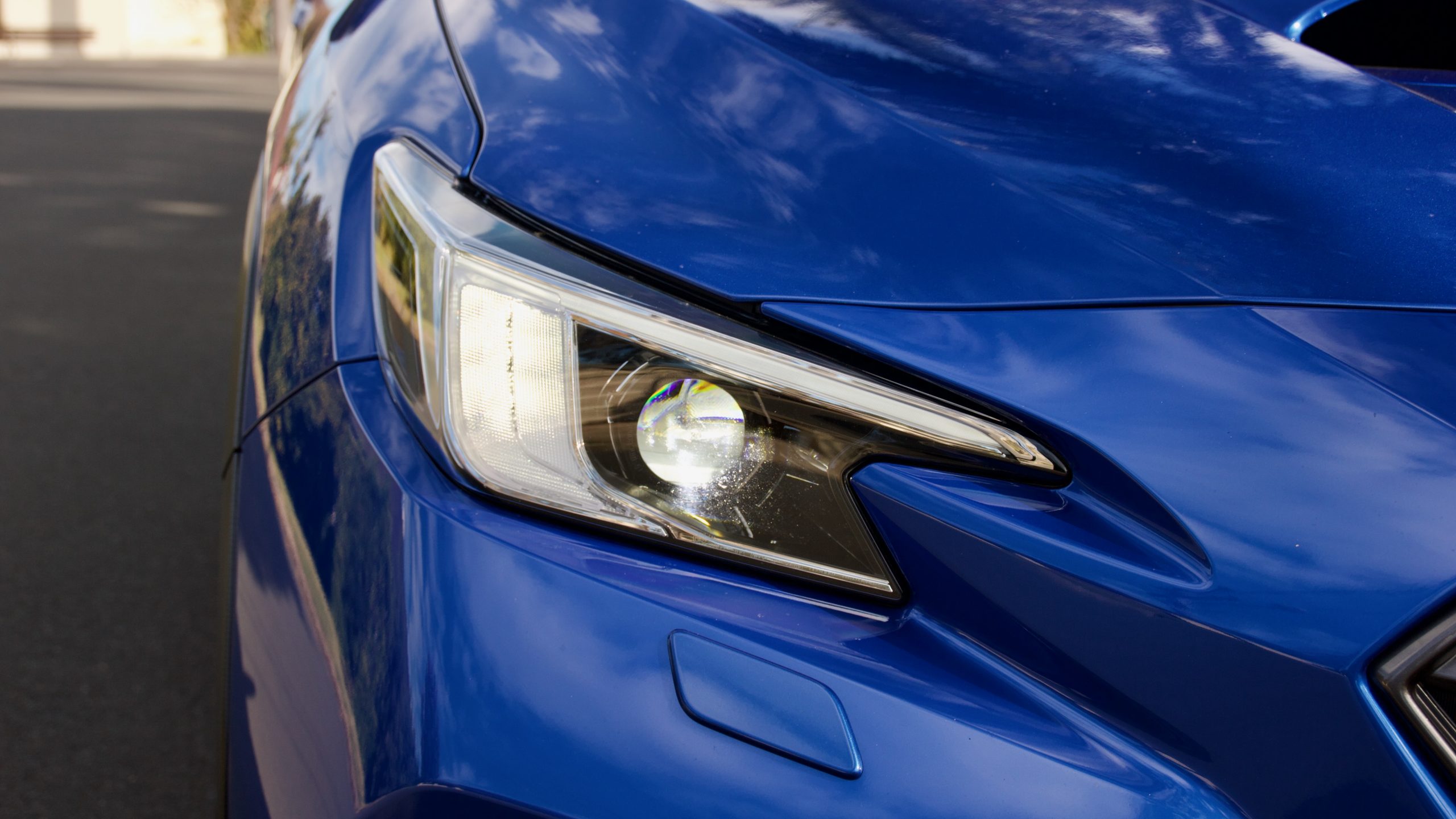
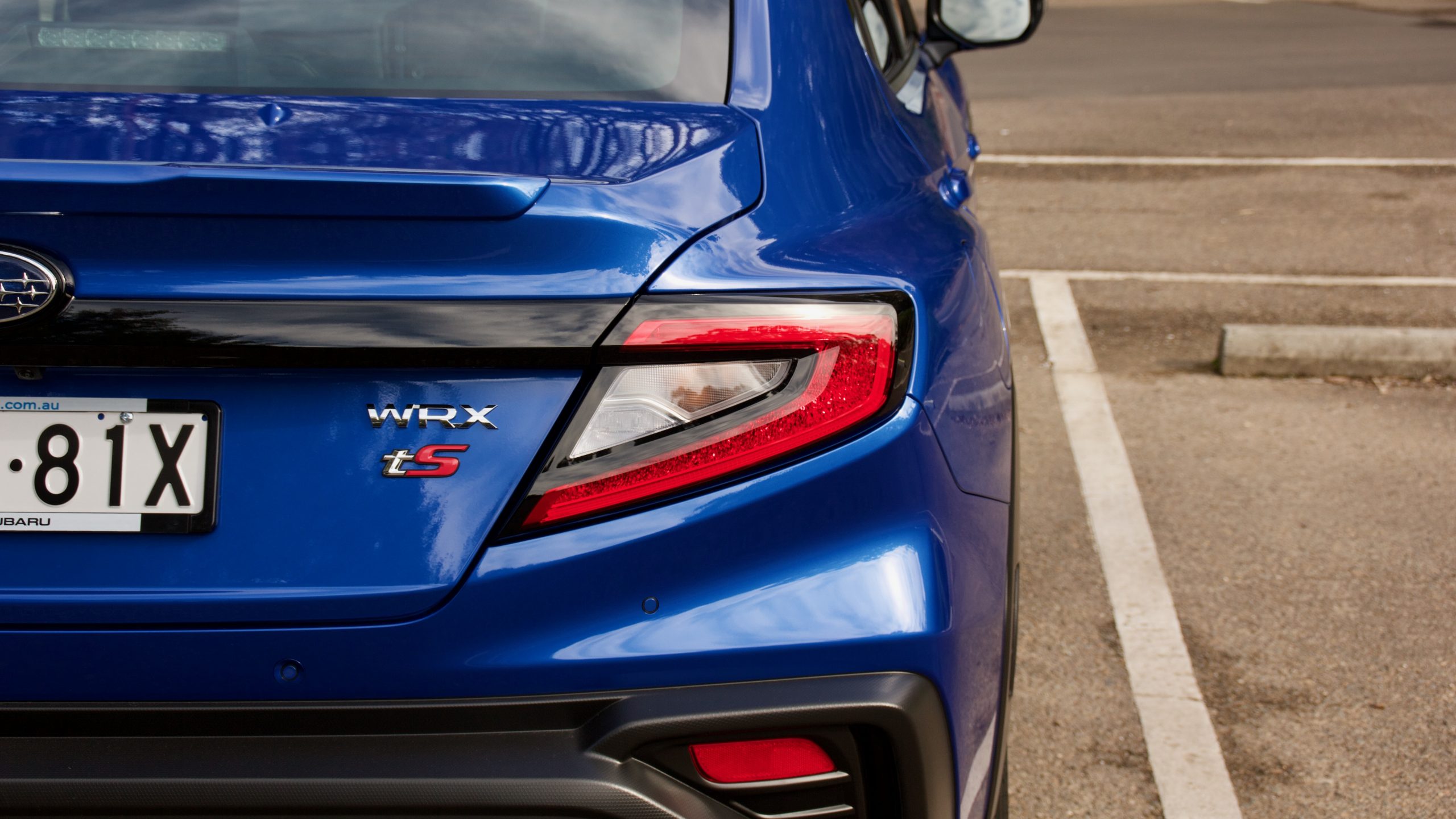
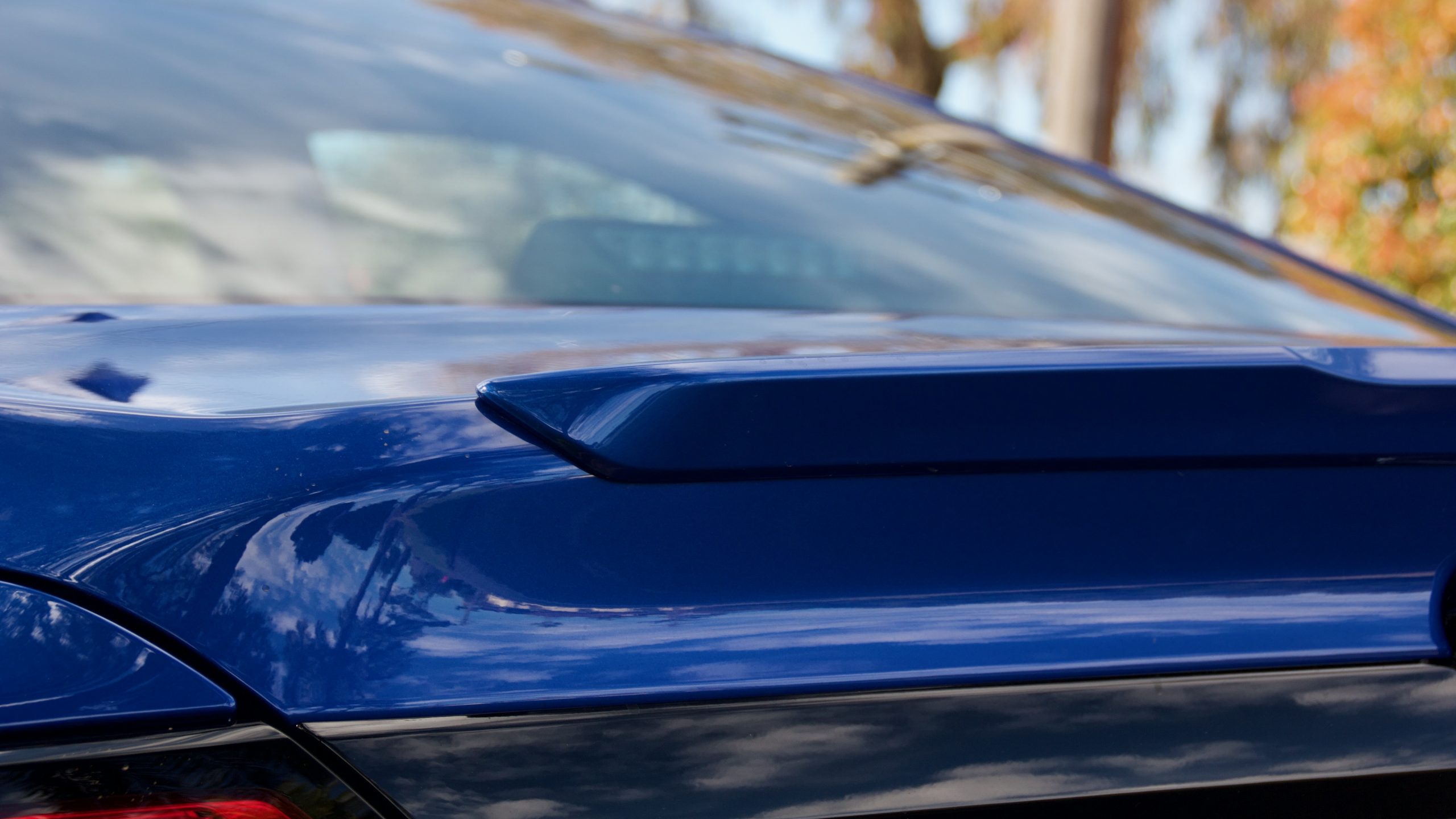
While memories of the WRX versus Mitsubishi Lancer Evolution battle still rage in our minds, competitors to the WRX sedan are a lot thinner these days and include the Hyundai i30 N sedan and Skoda Octavia RS, while hot hatch additions include the Ford Focus ST, Volkswagen Golf GTI and Toyota GR Yaris.
We consider the Hyundai i30 N sedan to be the WRX’s main rival. It’s offered in a single spec in Australia, priced at $49,000 plus on-road costs (around $56,000 drive away fitted with the optional sunroof – $6,000 less than the WRX tS, though lesser WRX models are available) for either the six-speed manual or eight-speed dual-clutch automatic. While the extra spend on the WRX gets you all-wheel drive, more safety equipment and more rear seat features, the i30 N sedan adds features like a wireless phone charger, full leather upholstery, ventilated front seats and crucially, an active exhaust system.
Performance & Economy: 7/10
Under the bonnet of the 2022 Subaru WRX tS Sedan is Subaru’s new ‘FA24’ 2.4-litre turbocharged four-cylinder petrol engine, which pumps out 202kW of power (at 5,600rpm) and 350Nm of torque (between 2,000rpm and 5,200rpm). In the tS, it’s matched to a CVT automatic transmission with eight stepped ratios – lesser models are available with a six-speed manual as well. Naturally, being a Subaru, the power is sent to all four wheels constantly.
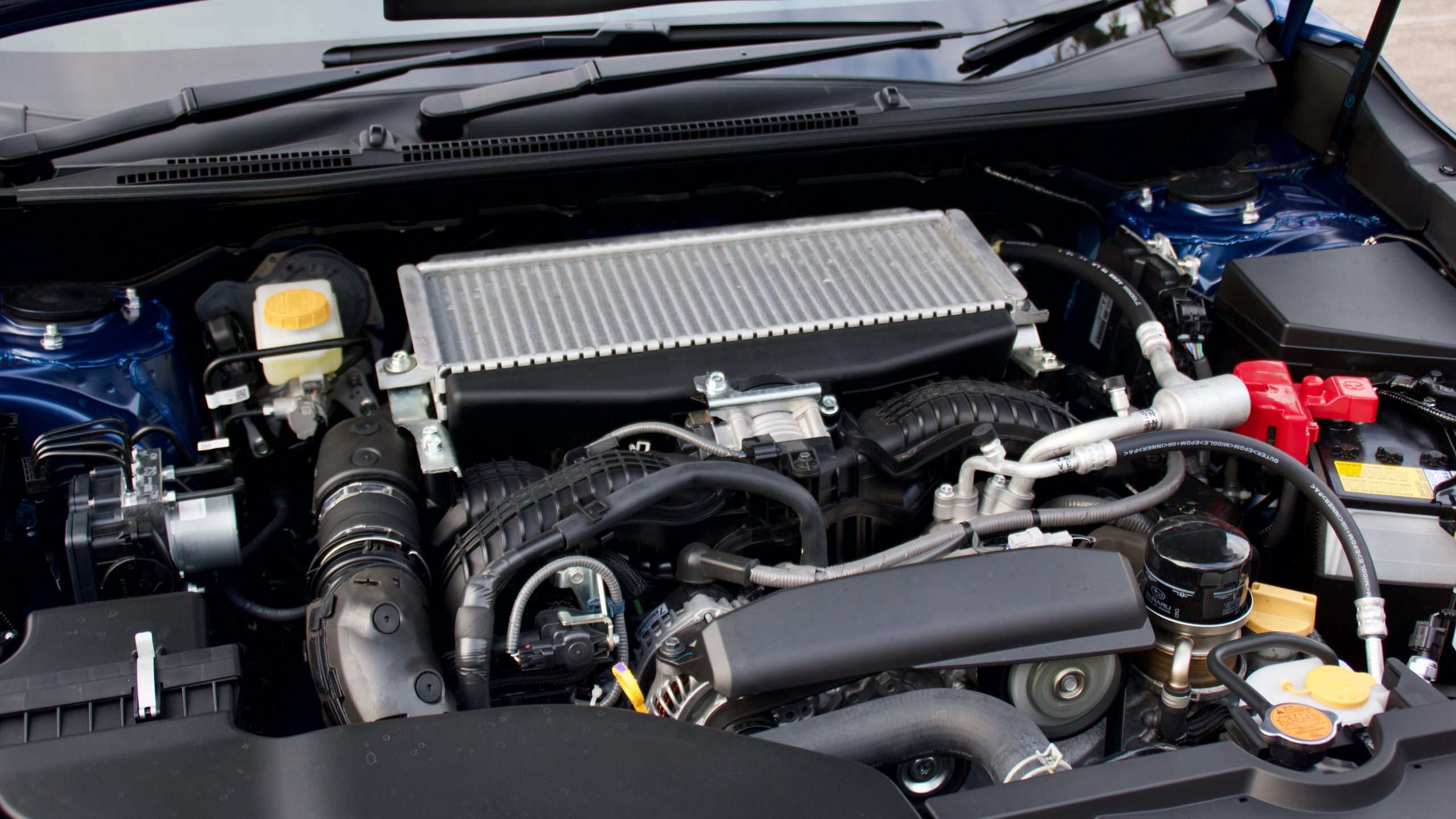
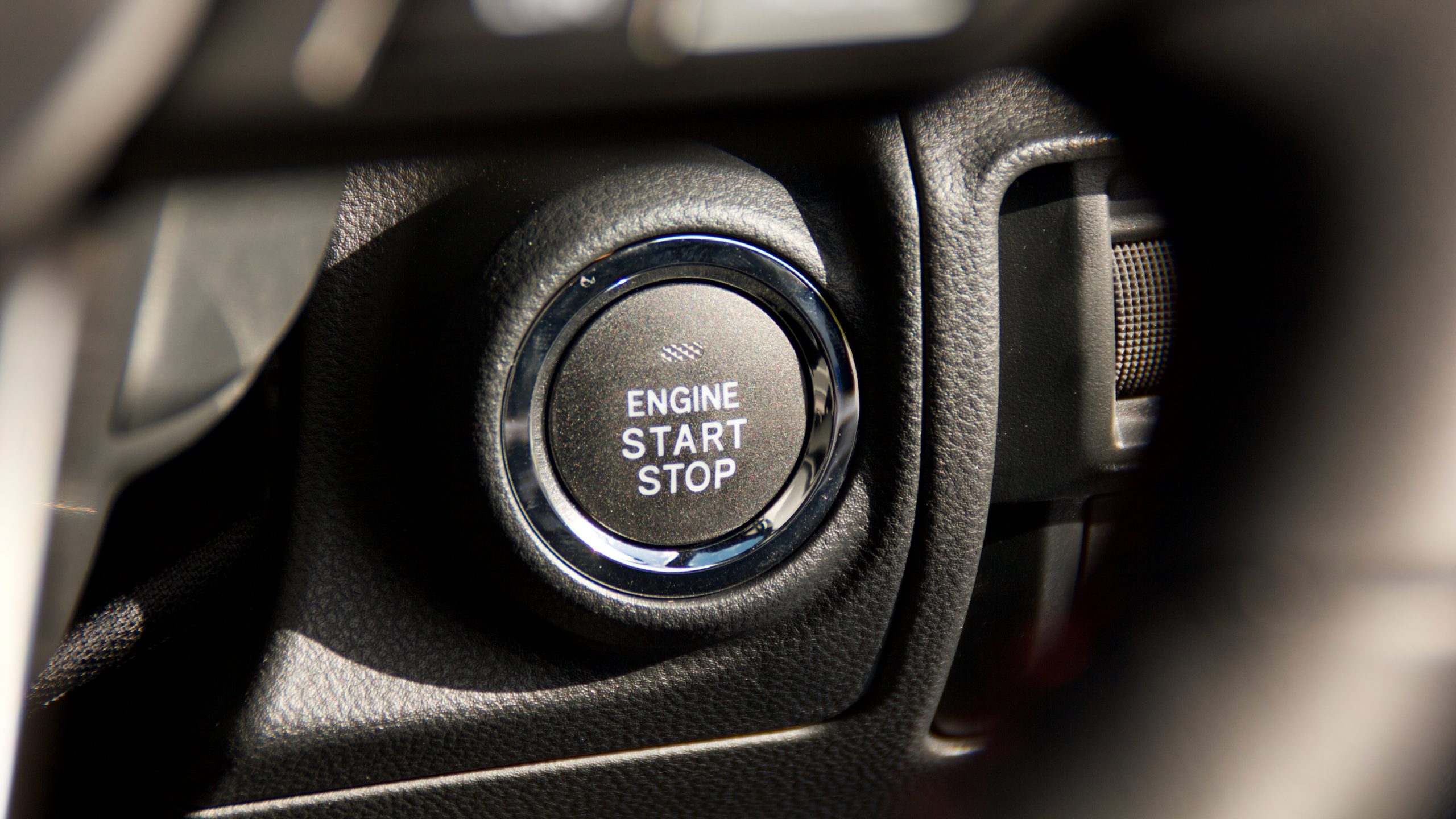
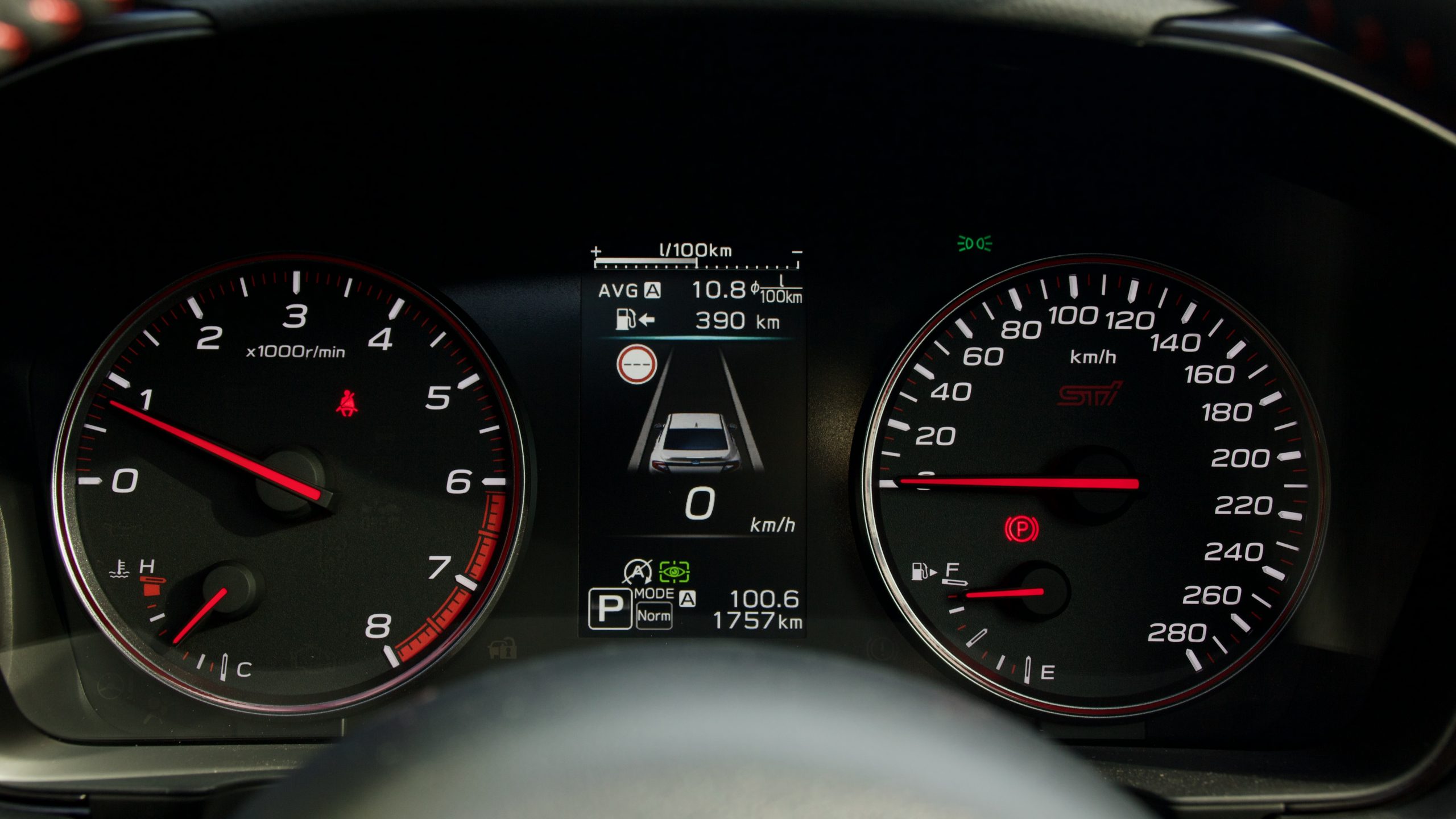
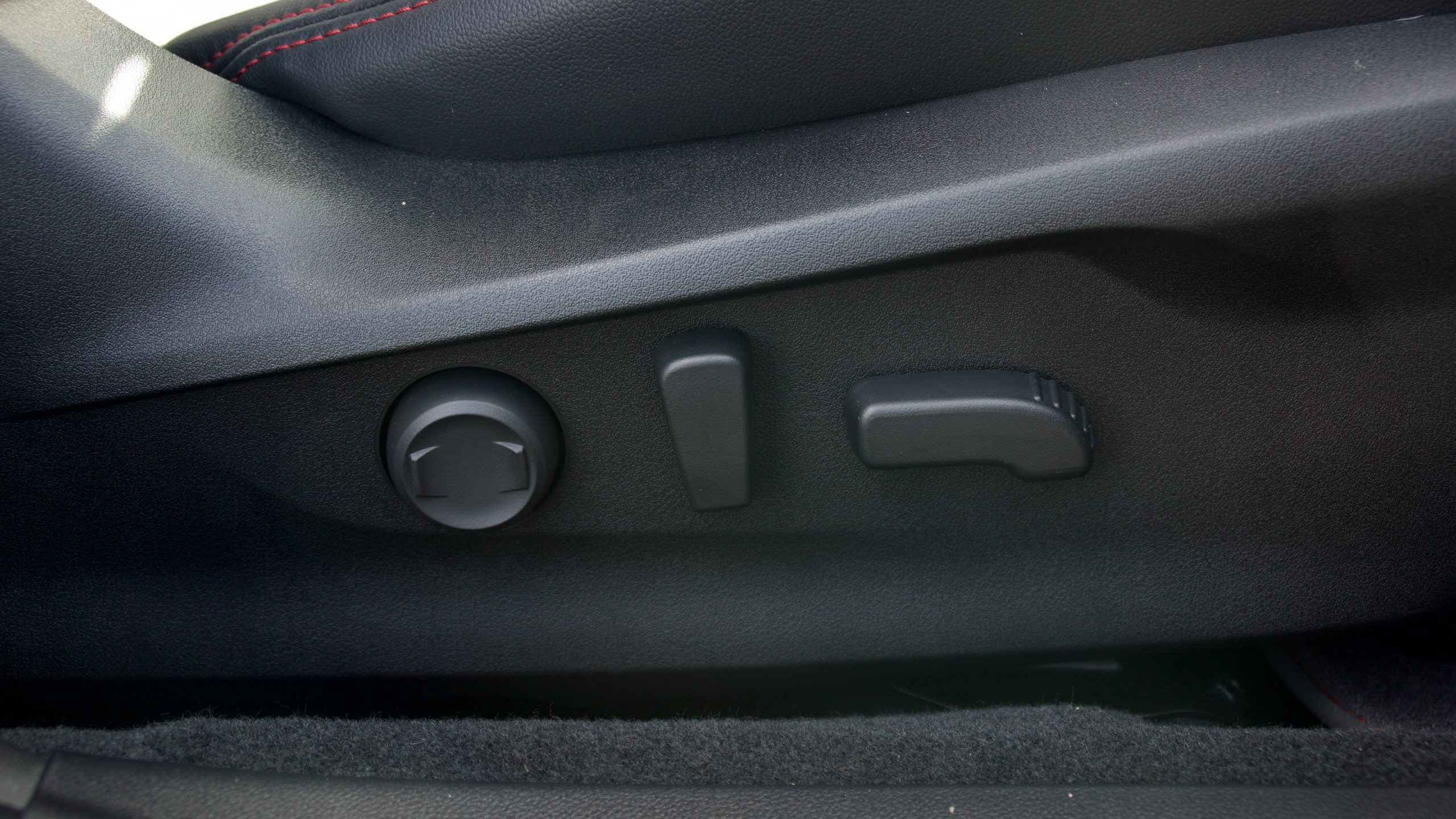
Compared with the last-generation WRX, the new car’s outputs have grown by 5kW and it actually has the same peak torque figure, but the peak torque hits 400rpm lower in the rev range. But aside from feeling slightly stronger in the mid-range, the WRX’s new engine isn’t the slingshot we expected it to be and a 400cc increase in engine size should have brought with it more than just 5kW of power. A Hyundai i30 N has a full 42Nm more torque from 400cc lesser displacement. An i30 N also has far more noise – the WRX is far too quiet for our taste. Such is the refinement in the drivetrain, there is no noise form the engine at all during light acceleration even.
The CVT automatic transmission – or ‘Subaru Performance Transmission’ – is a generally good around town, where its tendency to keep the revs as low as possible is great for the WRX’s refinement. But is it a performance transmission? Absolutely not. In the regular drive modes, the CVT is too slack compared with the dual-clutch units in Volkswagen Group cars and Hyundai N range, while it’s just never as engaging as them either.
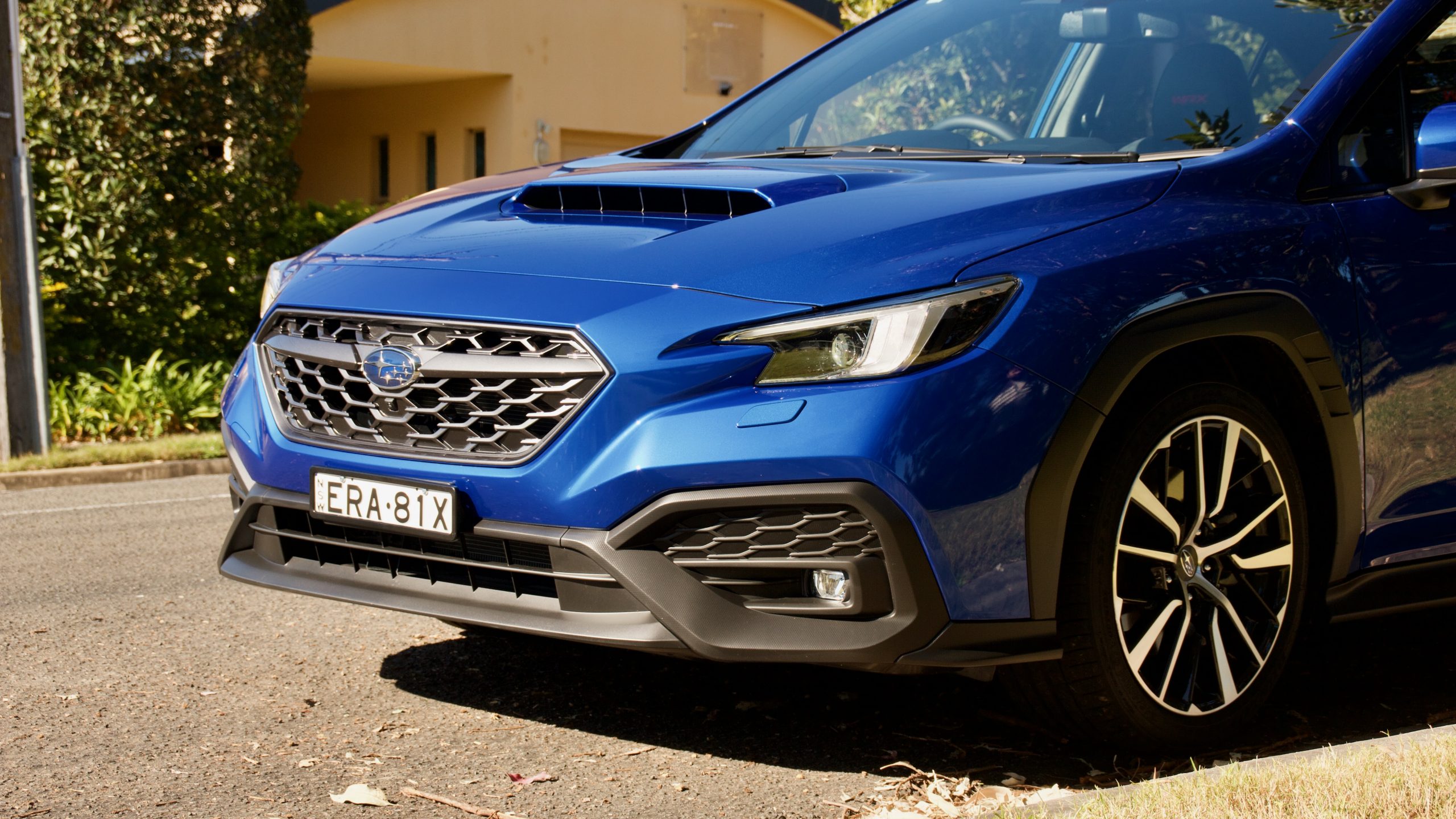
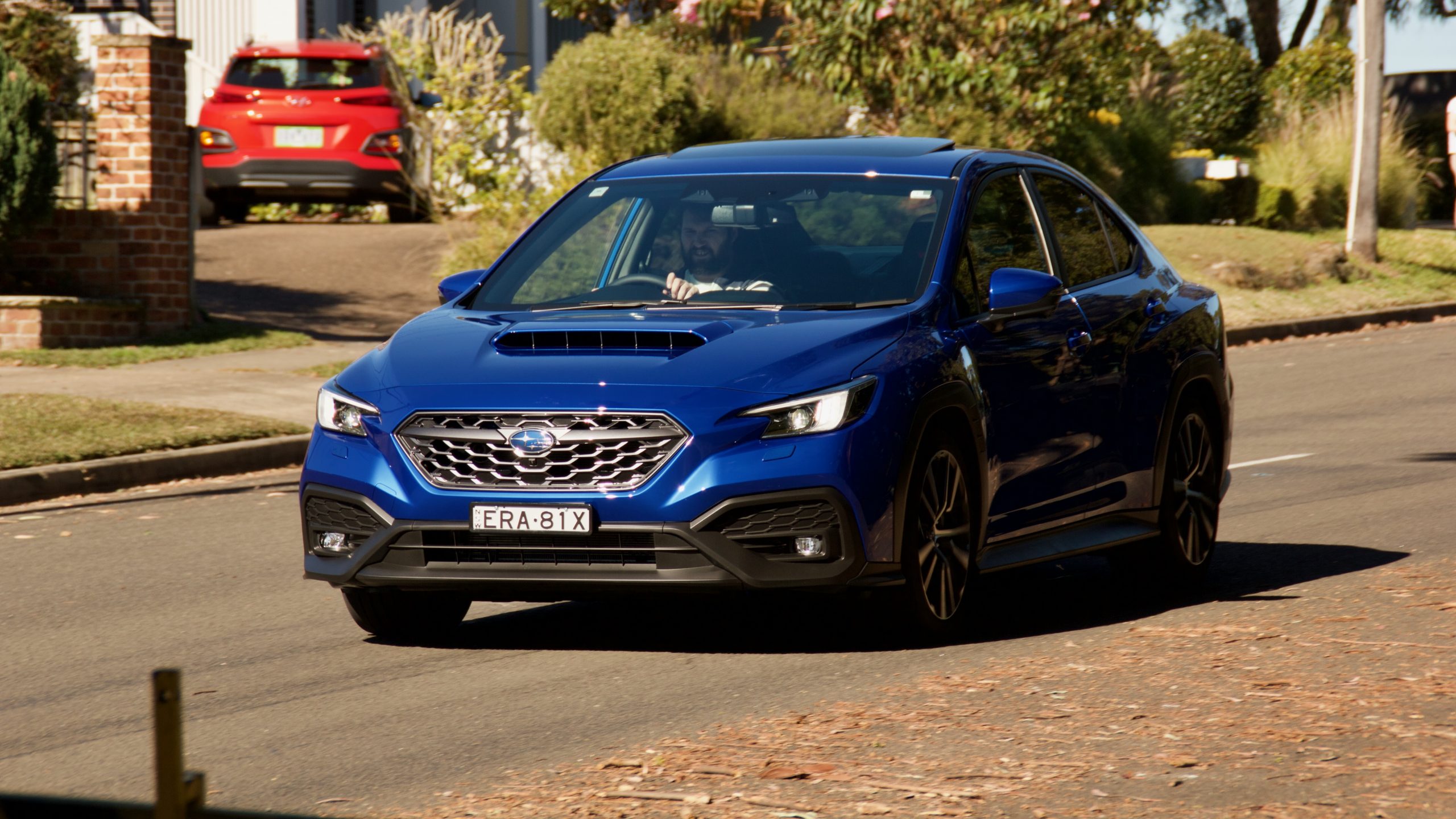
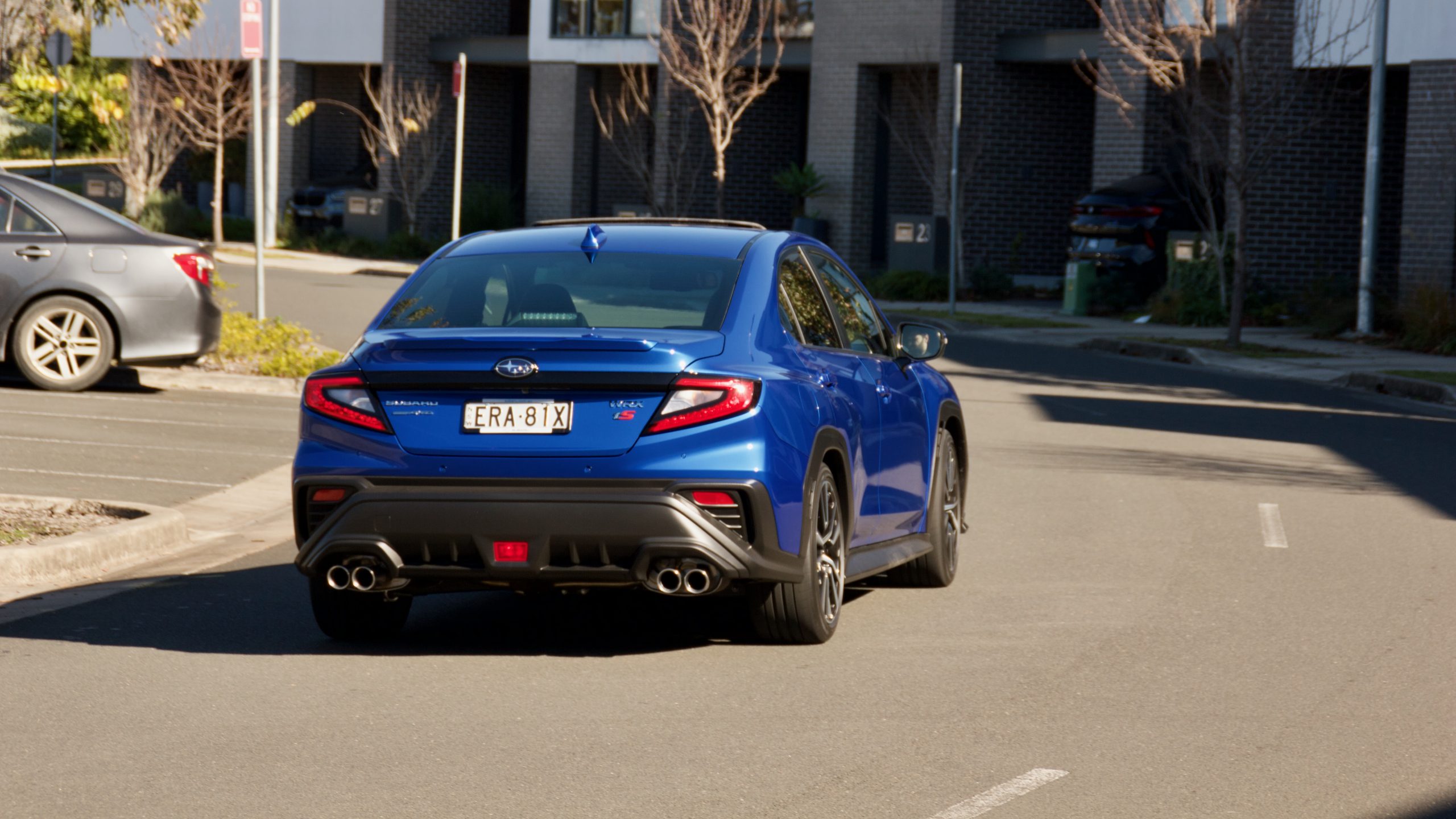
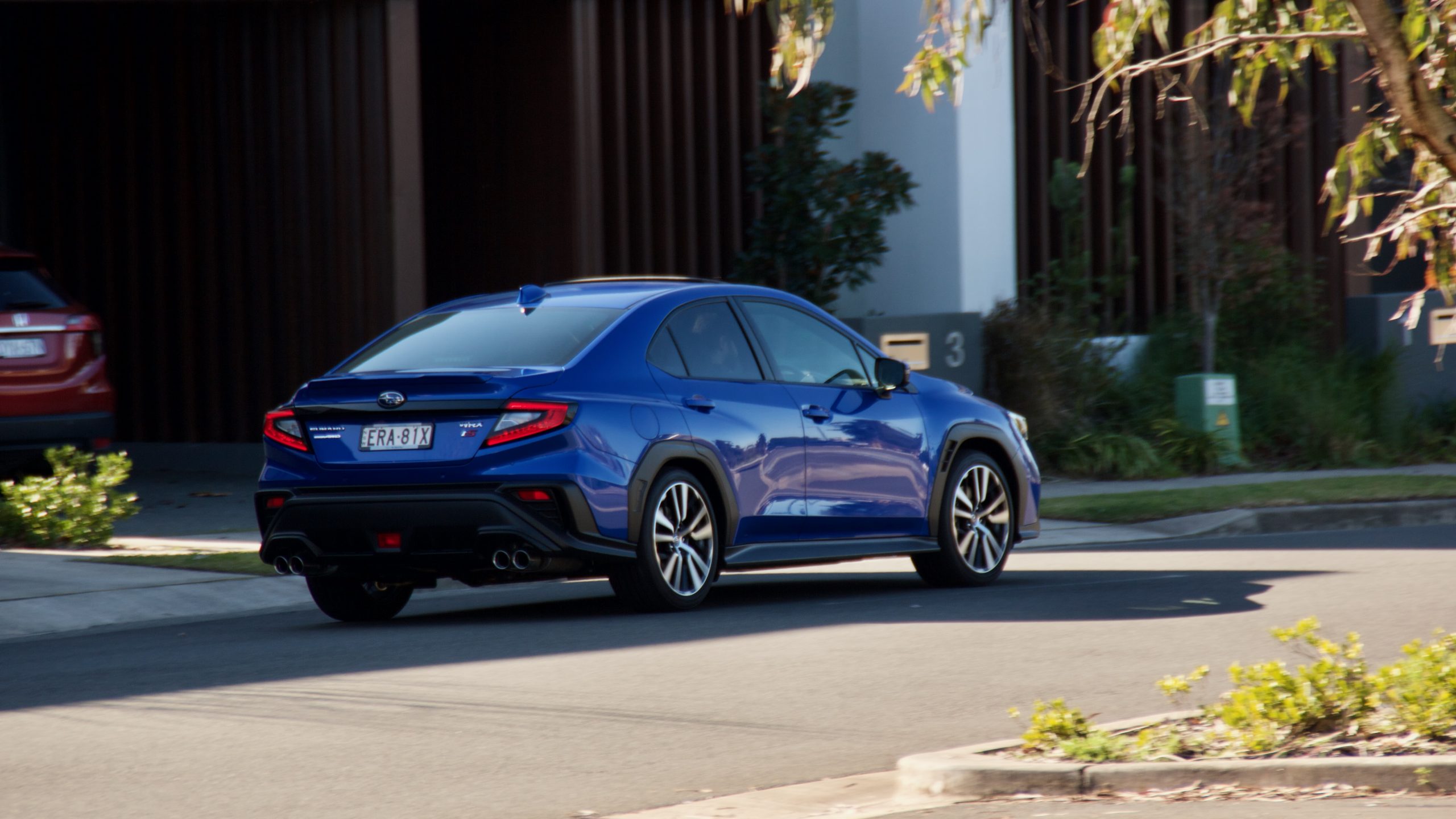
Unlike the previous generation WRX, the new car comes with a variety of drive modes: comfort, normal, sport, sport+ and individual, which allows drivers to set various parameters about the car to their tastes. The drive modes change a variety of things about the car – throttle response, steering weighting, ride firmness and perhaps what makes the biggest difference to the car’s performance: transmission mapping.
In sport+ mode, the transmission feels most like a torque converter automatic. The stepped nature is quite obvious, it rev matches on the ‘downshifts’ and while keen drivers will be able to tell the difference between this CVT and a regular automatic transmission, this writer isn’t sure that regular drivers could. There are paddle shifters for manual control and surprisingly, in both sport+ and manual modes, it will bounce off the rev limiter. In sport+ mode too, it feels much quicker and the 6.1 second 0-100km/h sprint time feels relatively believable. But regardless of drive mode, an i30 N feels quicker than the WRX – and it is, despite being front-wheel drive with a 5.3 second time in the dual-clutch automatic variant.
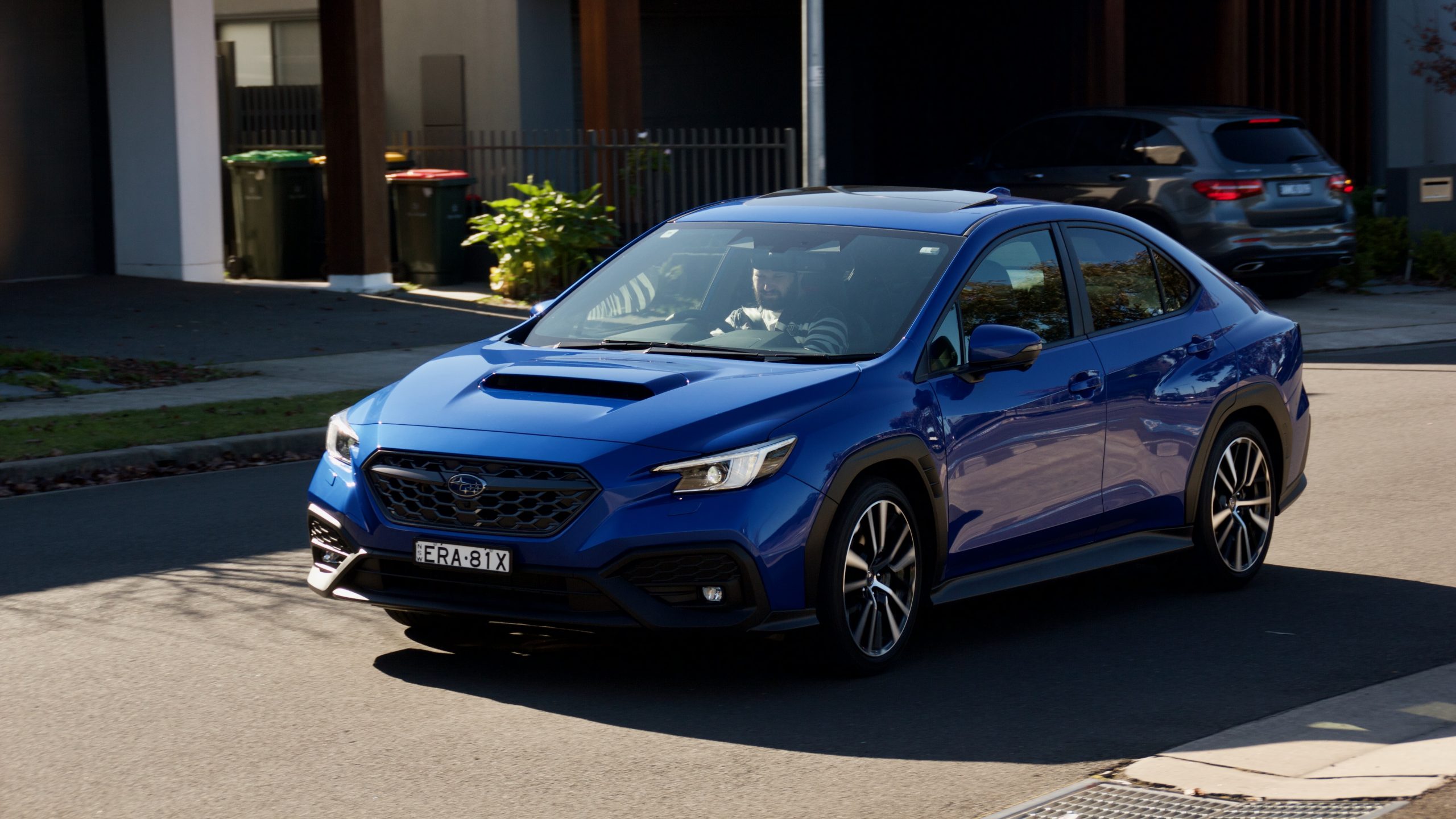
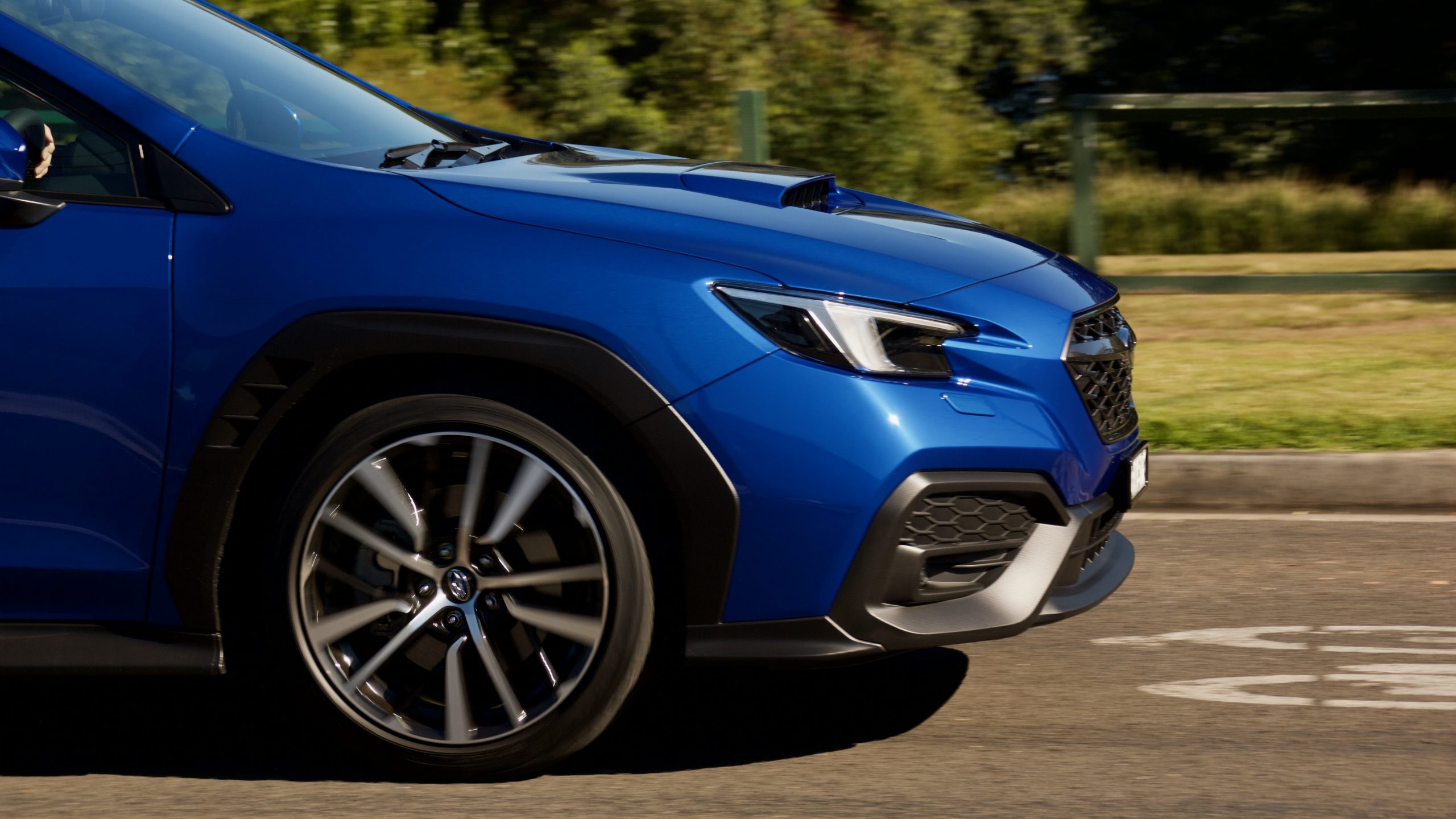
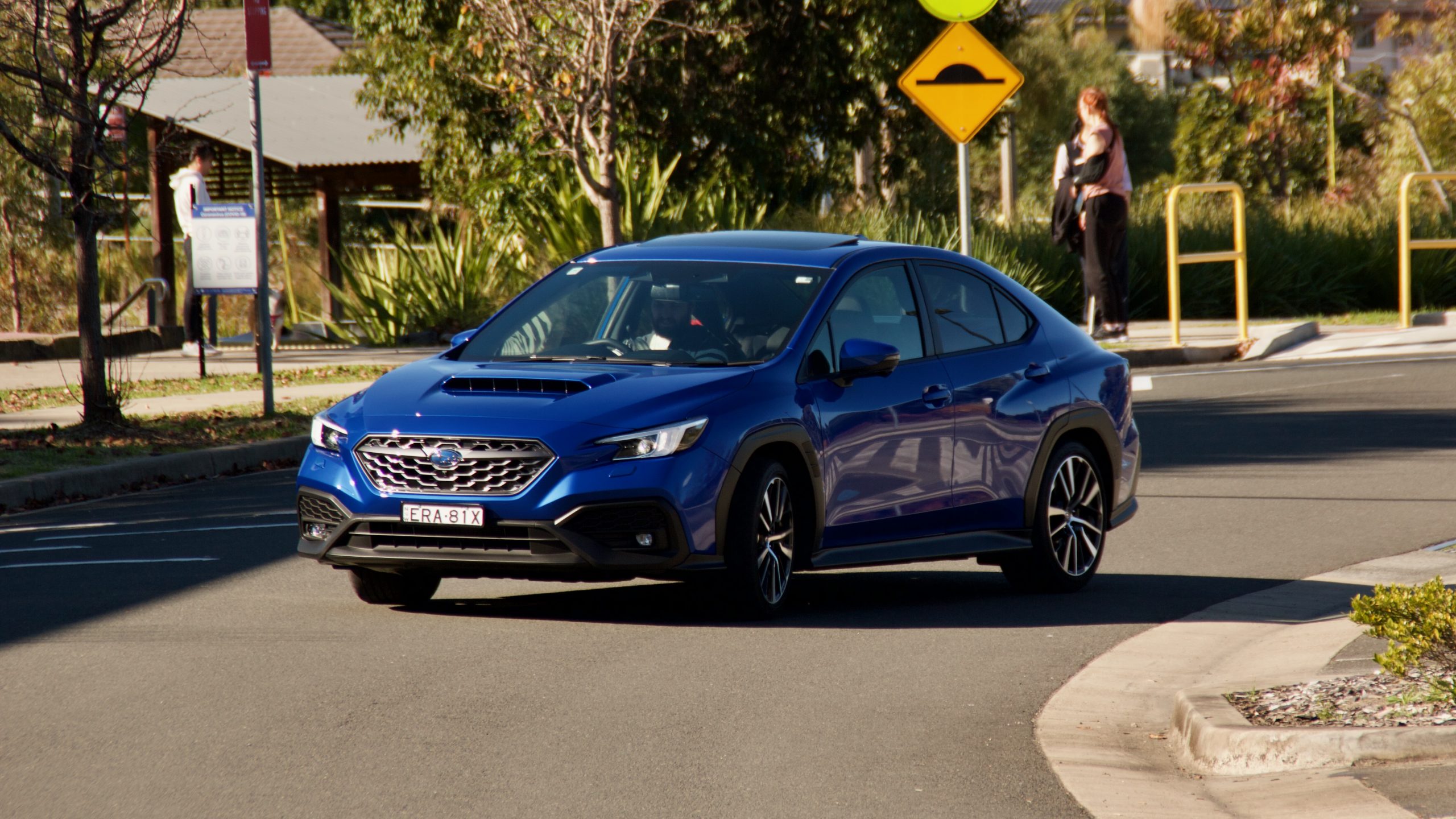
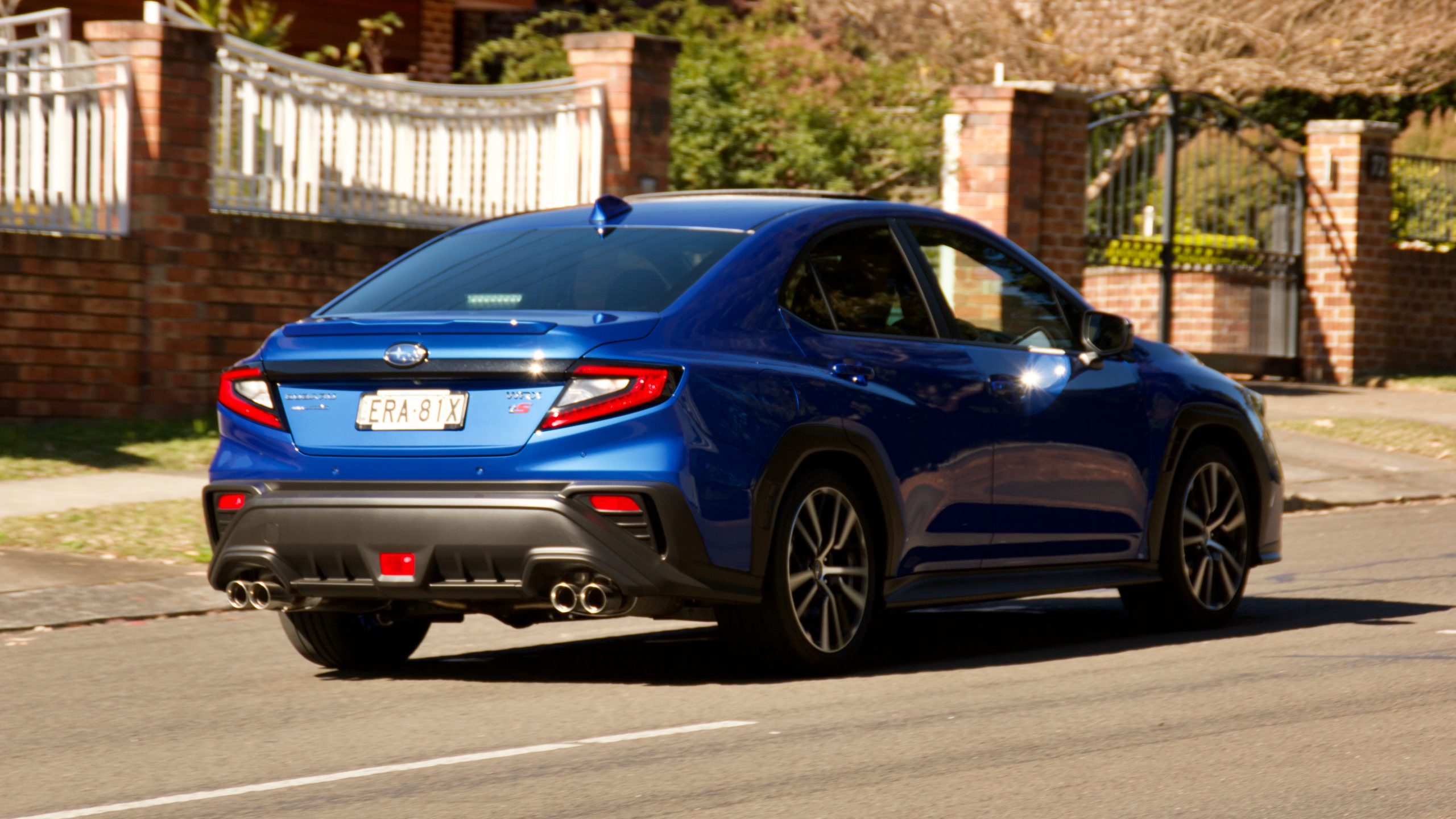
Subaru claims that the WRX CVT will use 8.5L/100km on a combined cycle, and we used 10.3L/100km in mixed driving. The WRX uses minimum 95RON fuel and has a 63-litre fuel tank.
Ride & Handling: 8/10
Thinking of the WRX name produces images of hard-edged rally cars, right? Well, unfortunately – or not, depending on your point of view – Subaru has mostly moved on from those days and the new WRX is much more of an all-rounder than previous generations of the car. It’s certainly softer than we expected, so much so that we think it should be called the ‘WRX-Line’ and a harder and faster proper WRX should sit above it. Like an STI that’s already confirmed not for production for this generation WRX. Sigh…
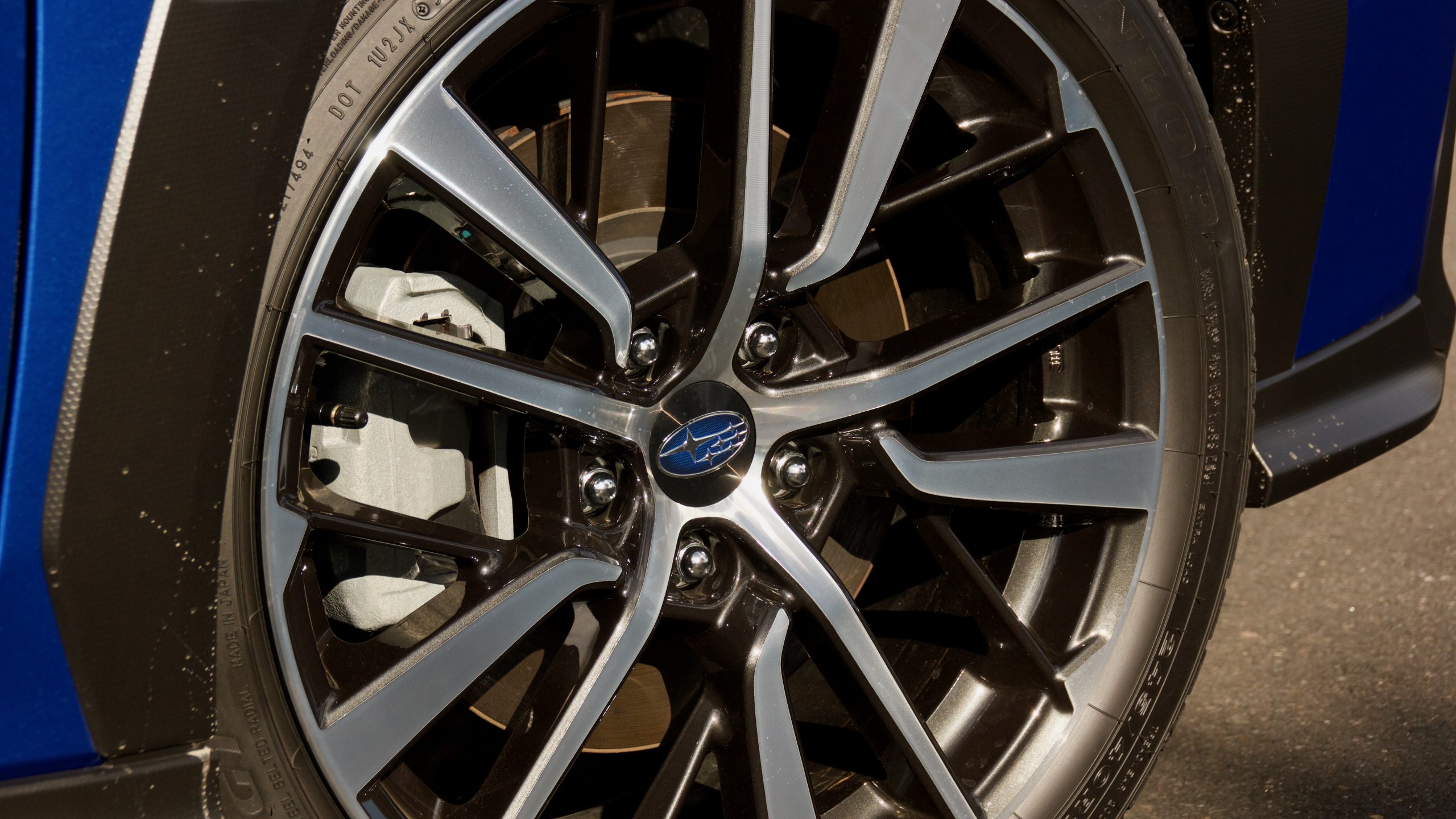
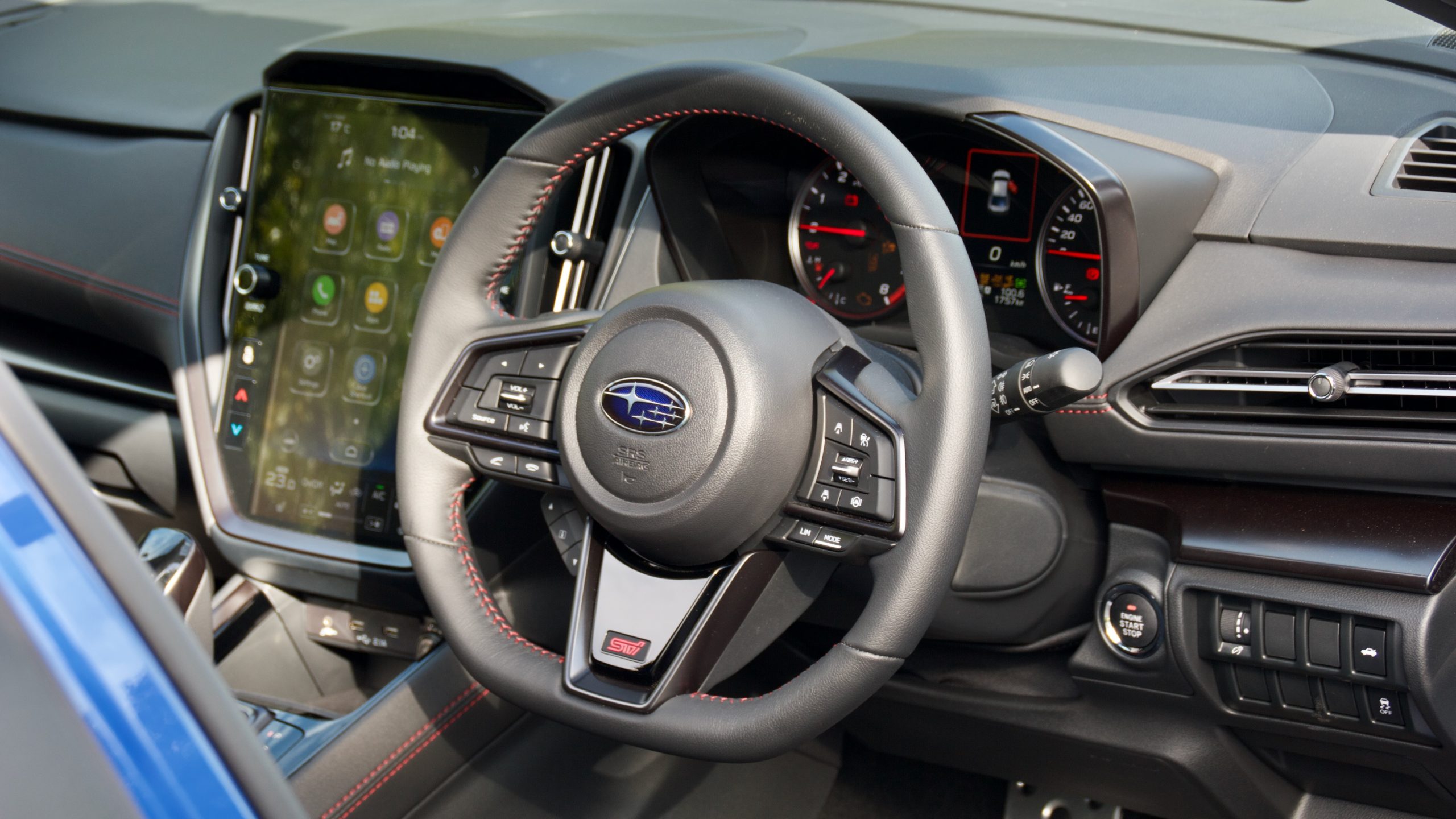
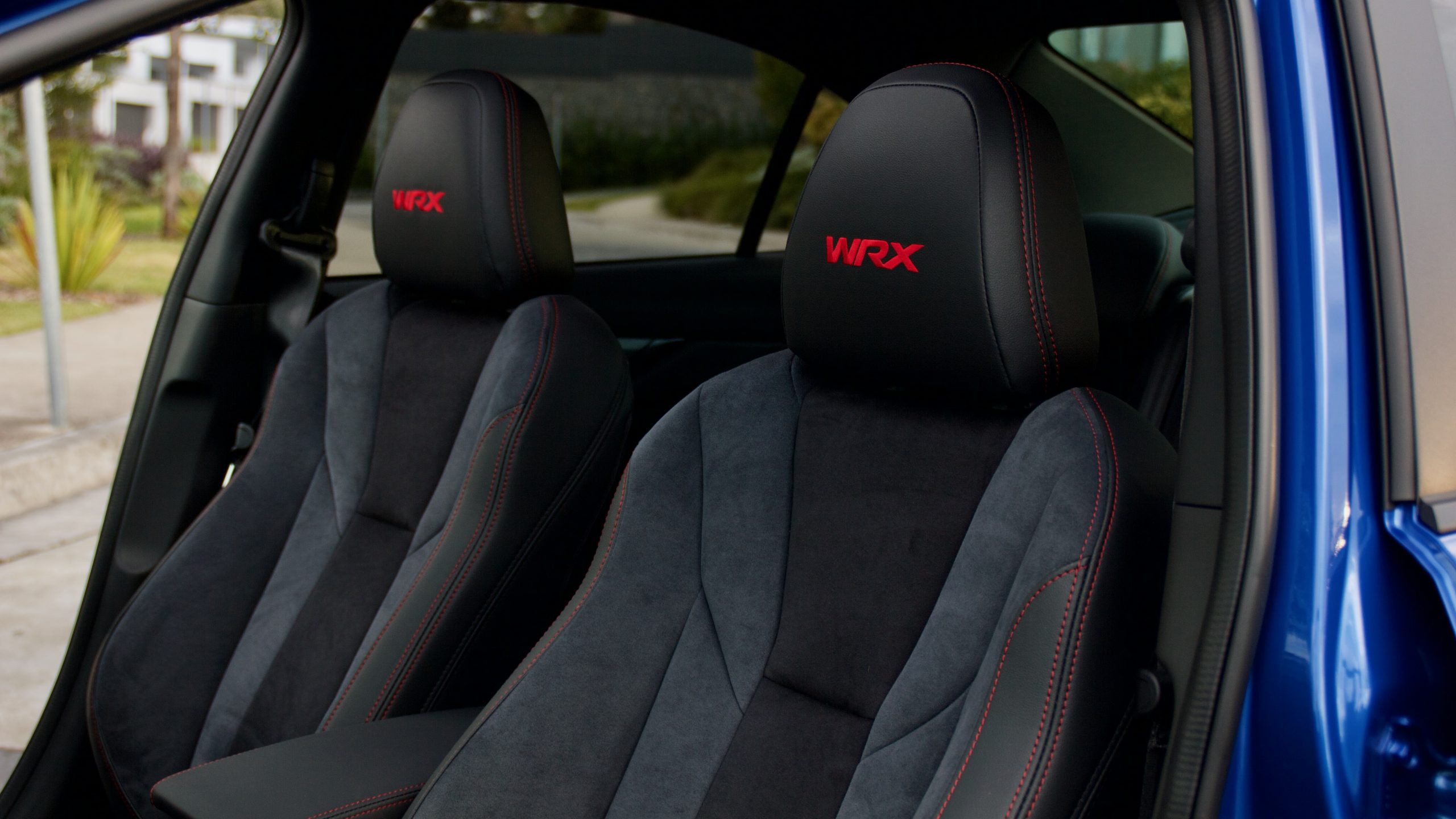

Why is that? Well, despite the adaptive dampers of the tS model, the WRX never feels as tenacious and fun as you’d expect from the WRX name. It’s still fun to drive and can be quite quick, but a hard-edged rally car for the road it is not. The steering is sharp, but it lacks both feel and weight in comparison to the excellent i30 N steering rack, and while the chassis is generally quite good, it’s not as fun as the previous WRX – or the i30 N as well, it must be said.
Sitting on Subaru’s global platform – which also underpins the Outback, Forester, Impreza etc – the new WRX is good to drive, but it’s got nothing on its BRZ sibling for outright fun and dynamics. Part of that is the WRX’s porky weight – in tS sedan form, its tare weight is 1,585kg, which is a full 336kg heavier than the BRZ, and it’s even 115kg more than the 2009 Liberty GT spec.B automatic sedan that we think it echoes so much.
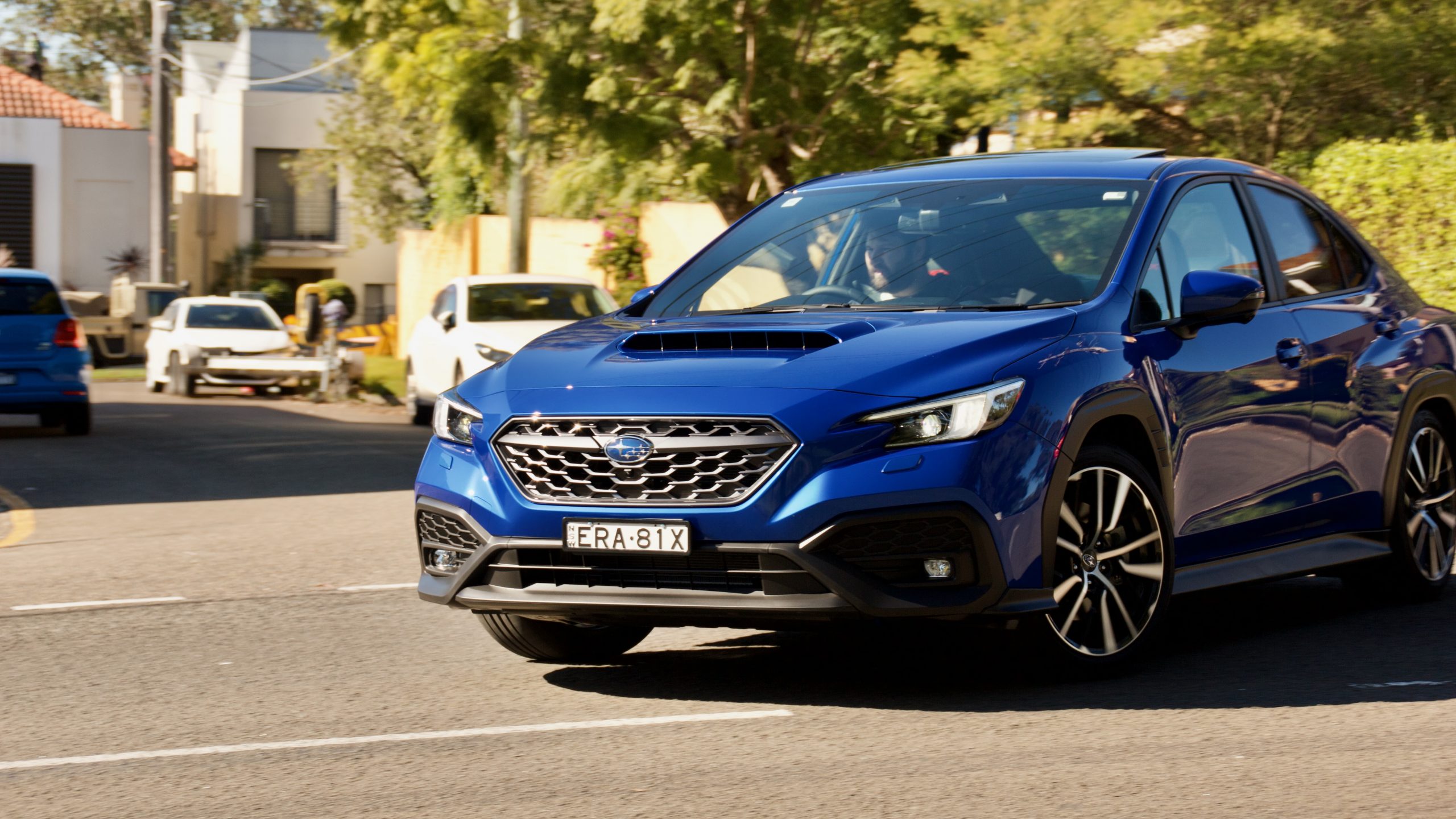
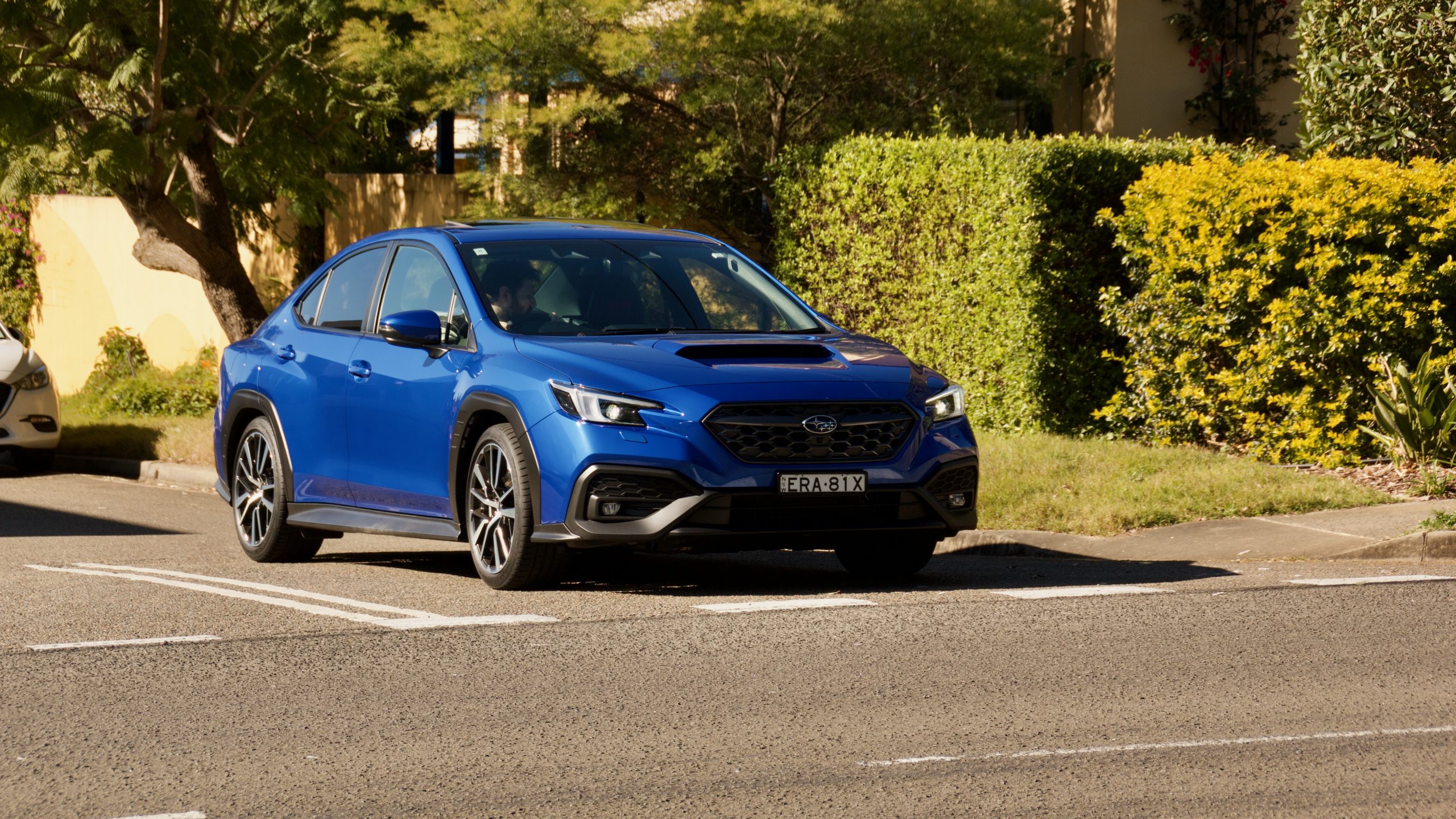
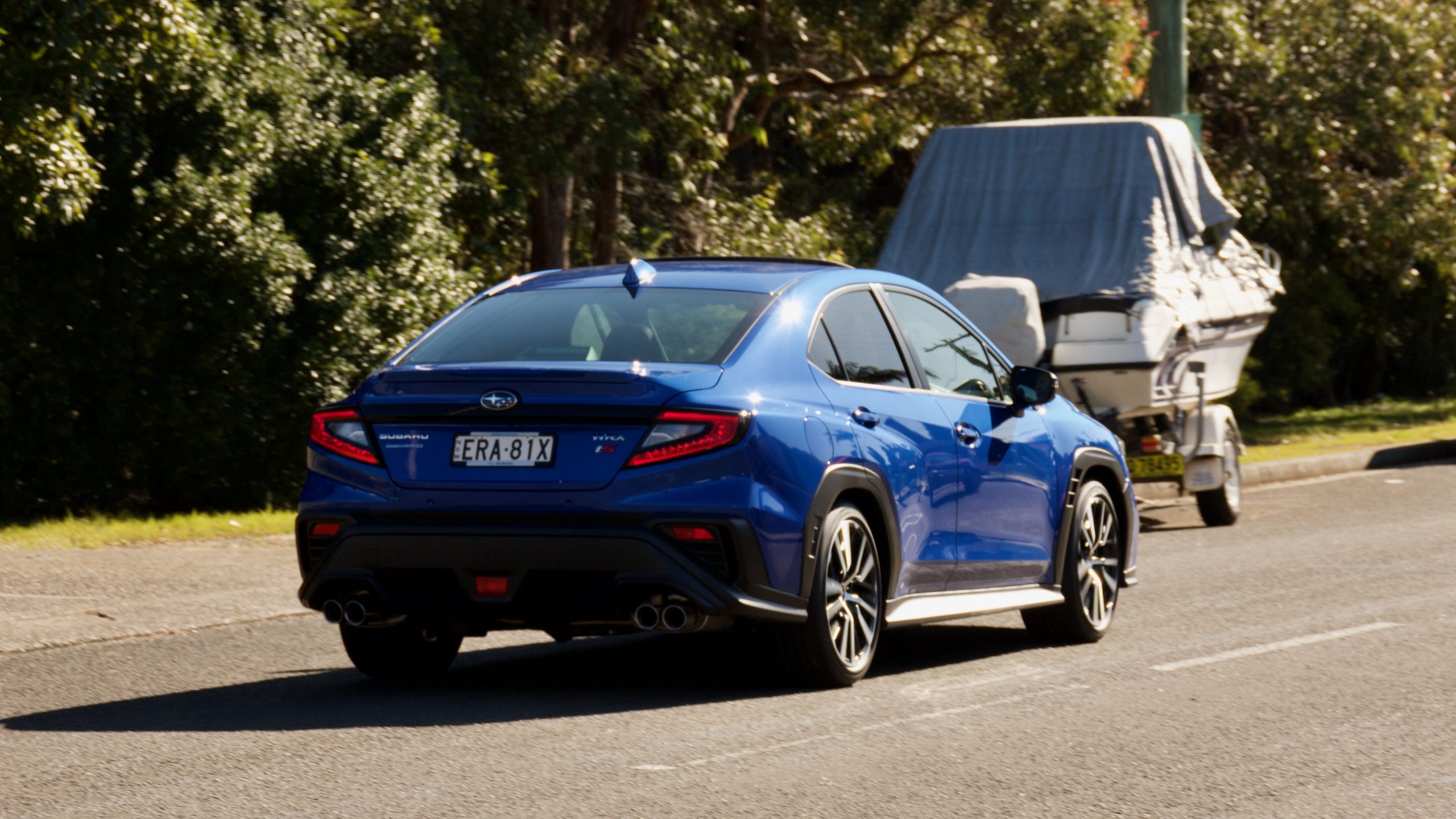
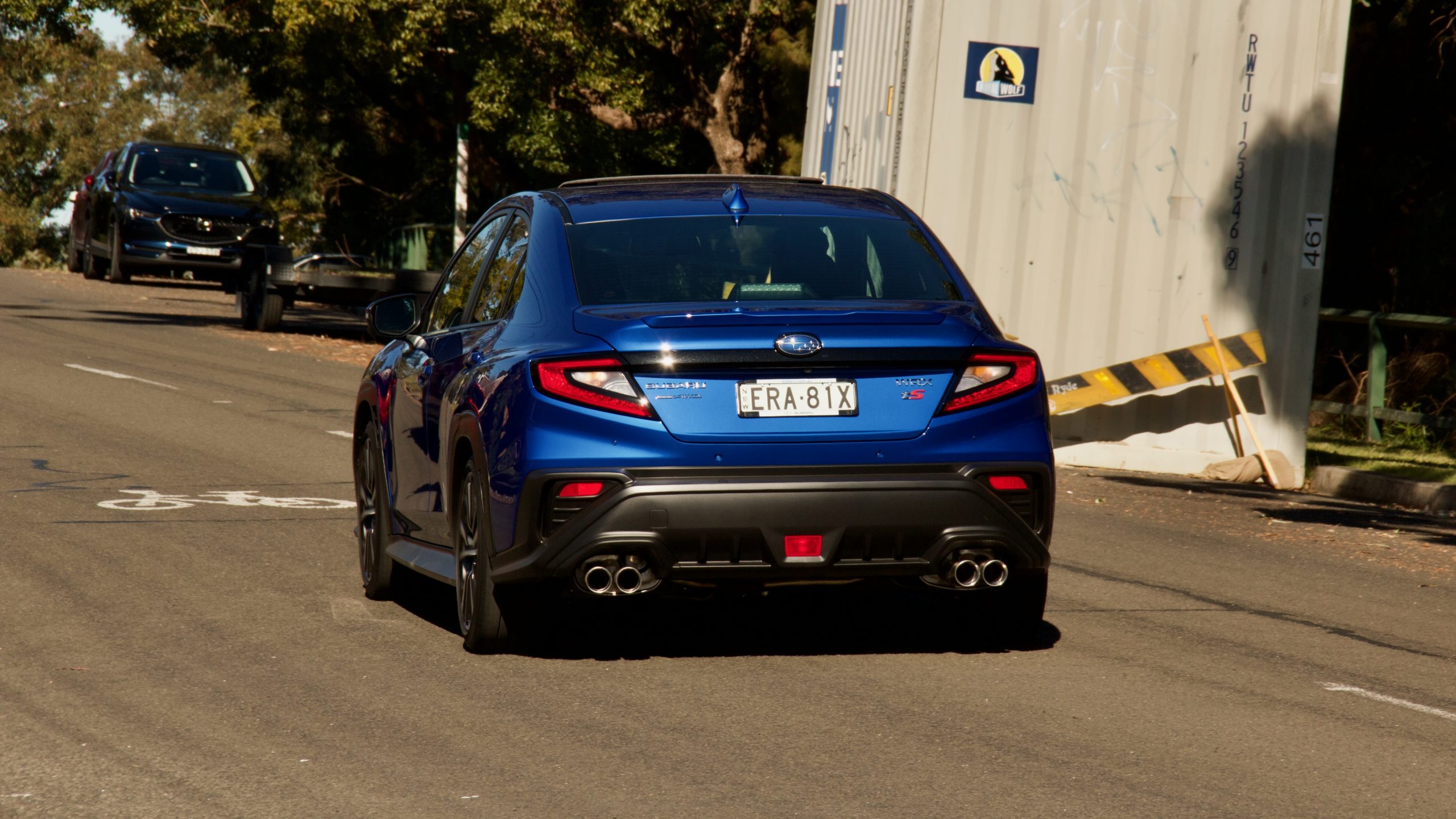
Like the fourth-generation Liberty that we miss so very much, the new WRX excels in everyday driving and in comfort mode, it’s seriously comfortable despite Australia’s awful roads. Road noise levels are reasonably low, the ride is soft and even in its softest setting, it shows more body control than in Volkswagen Group cars. Adjusting the drive modes to sport+ mode firms up the dampers and steering, but they’re still not as sharp as an i30 N sedan, and the fun level you expect from a WRX just isn’t there.
Interior & Practicality: 9/10
While the WRX’s mechanicals haven’t really moved the game on, its interior is definitely a big step up on the car it replaced. The quality is better, it’s more comfortable, more technologically advanced and while – like the exterior – it’s a clear evolutionary step over the last model, it’s a far more cohesive and modern feeling interior than the last WRX.
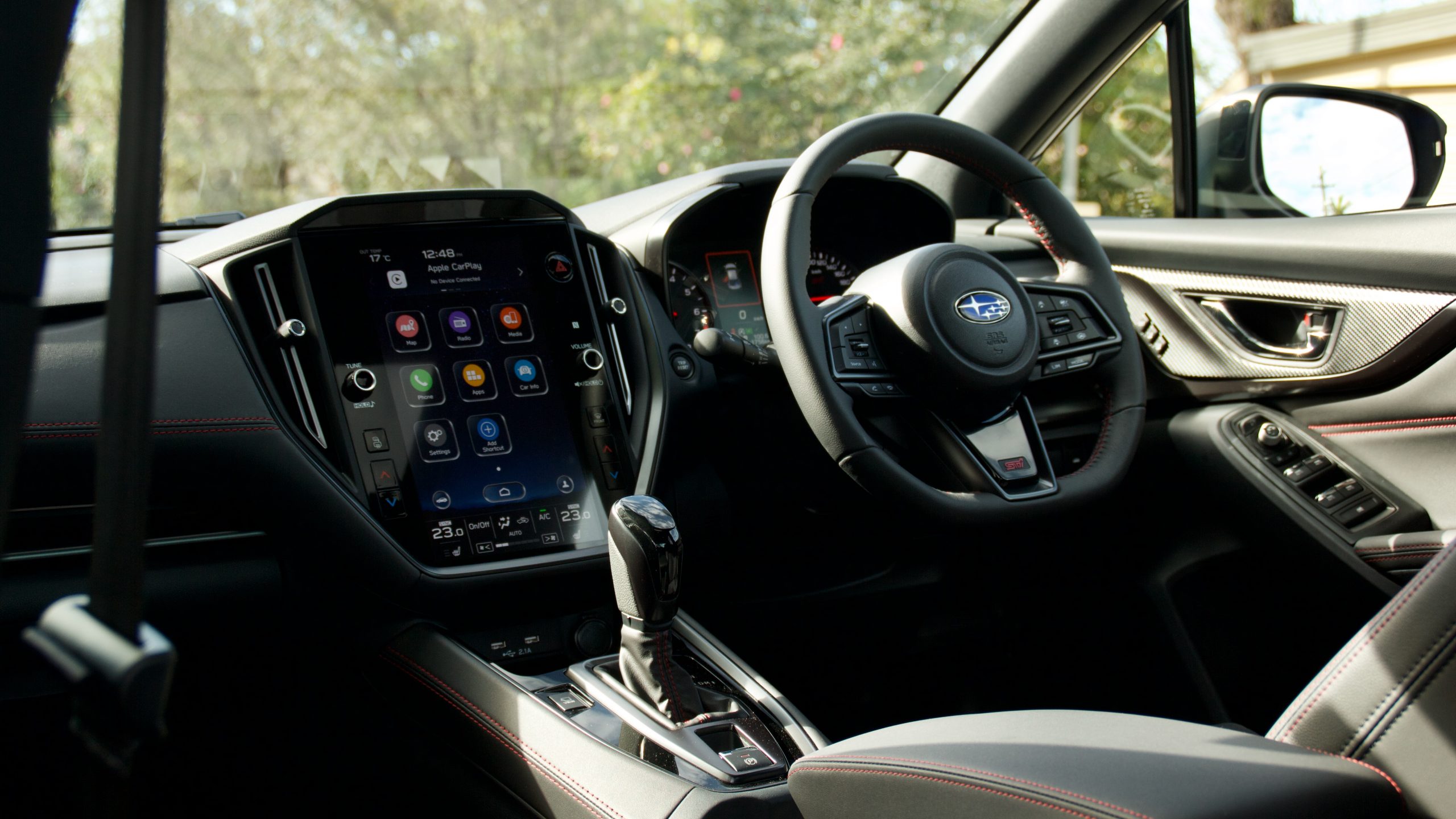
Material quality in the 2022 Subaru WRX tS sedan is generally quite good, and feels quite plush in comparison to the somewhat basic i30 N sedan. Soft touch materials cover the tops of the doors (including the rear), dashboard and even the centre console, with stitched leather-like materials meeting your knees in hard cornering. The suede and leather sports seats are a highlight as well, with excellent bolstering and – finally – a good range of lumbar adjustment.
It’s also a relatively practical cabin. Storage solutions include flock-lined door bins, as well as a reasonable tray ahead of the gearbox (though not with a wireless phone charger), big cupholders and a small centre console box underneath the armrest (which is where the CD player is).
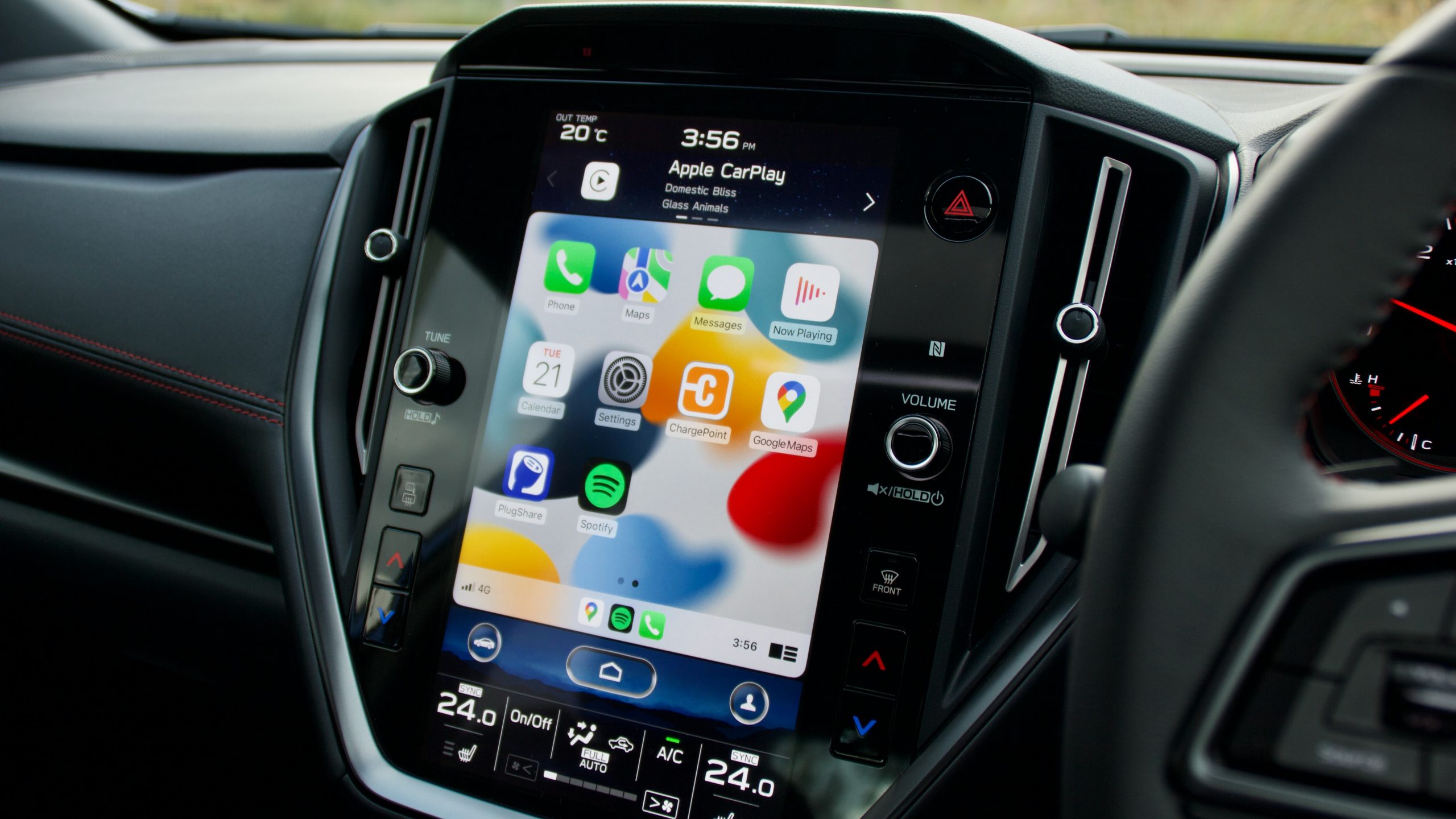
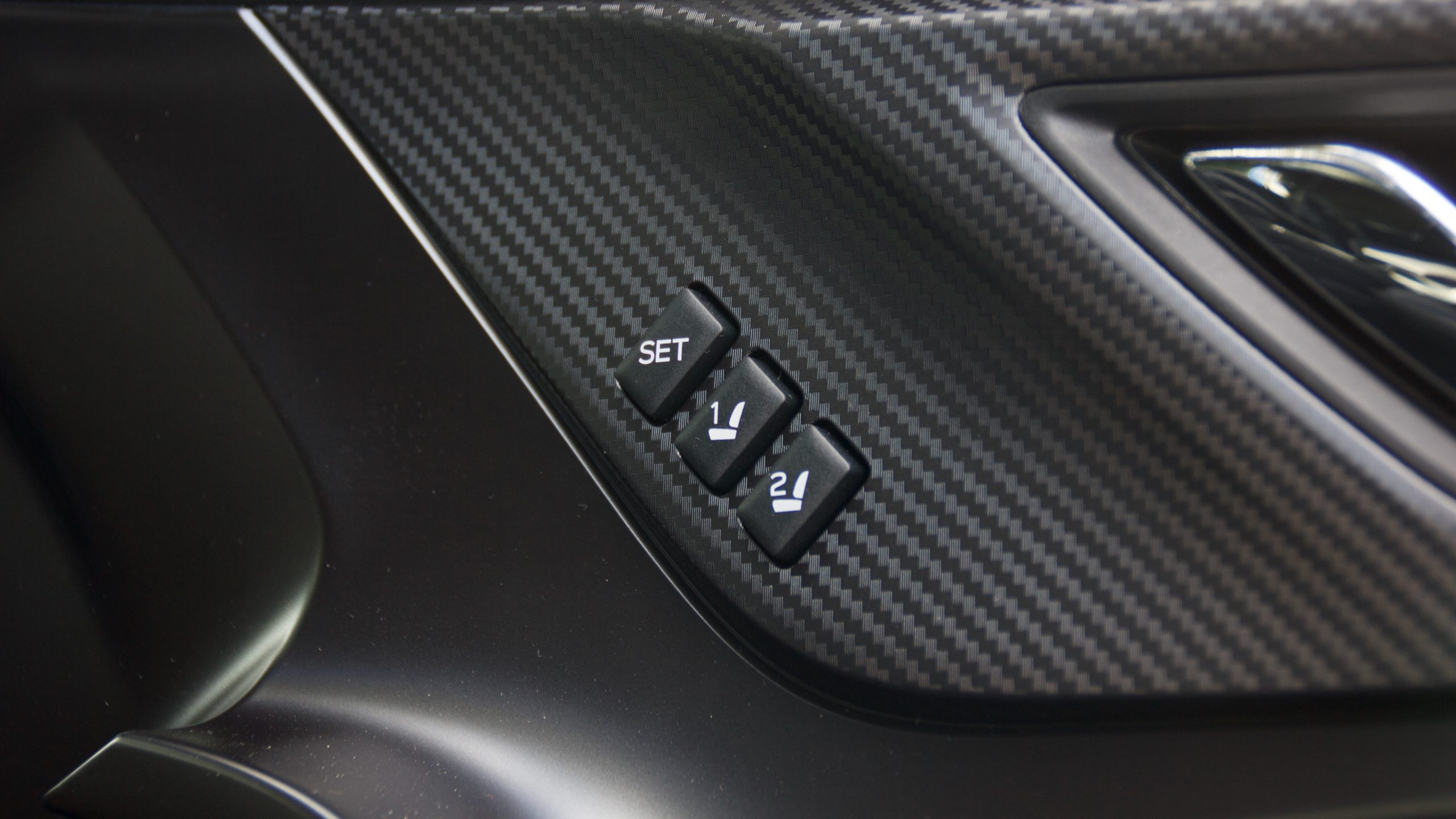
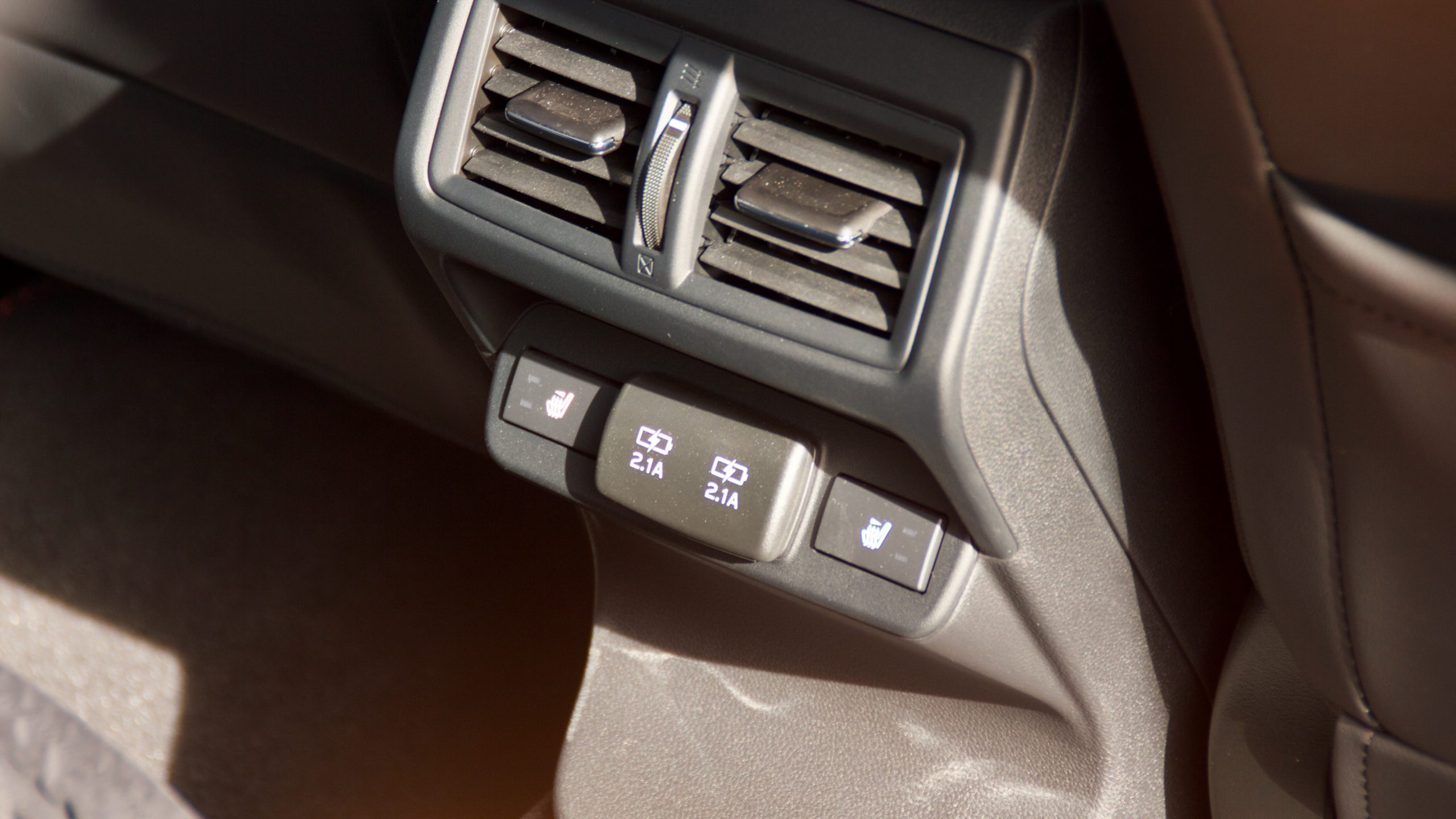
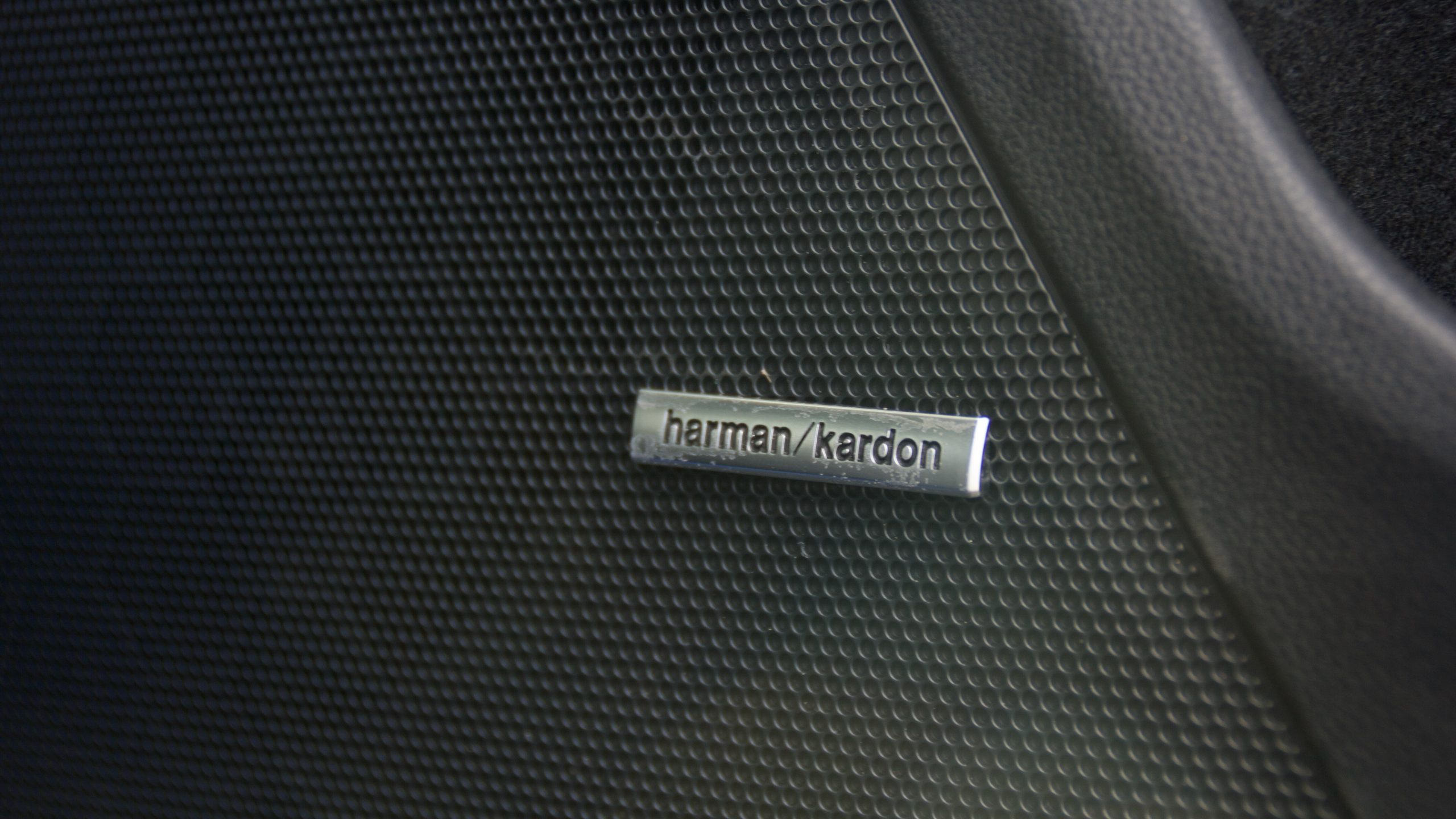
Centre of the cabin is a portrait 11.6-inch touchscreen with wired Apple CarPlay and Android Auto, satellite navigation, digital radio and even a CD player – remember those? The screen’s resolution is good, it’s quick to use and it’s also fairly ergonomic as well. In front of the driver lies a traditional pair of dials and not the digital instrument cluster that’s found in the Japanese-spec WRX, nor a heads-up display, but they’re clear and legible. The punchy 10-speaker Harman Kardon sound system is quite good as well.
The back seat of the WRX is nice place to spend time with good leg, knee and headroom – even for taller folk. It’s well featured as well with door pockets, map pockets, air vents, heated seats and a centre armrest with cupholders, which is more than the i30 N sedan’s vents and one map pocket. The rear seat space is similar to the i30 N sedan though, with slightly more headroom but less legroom.
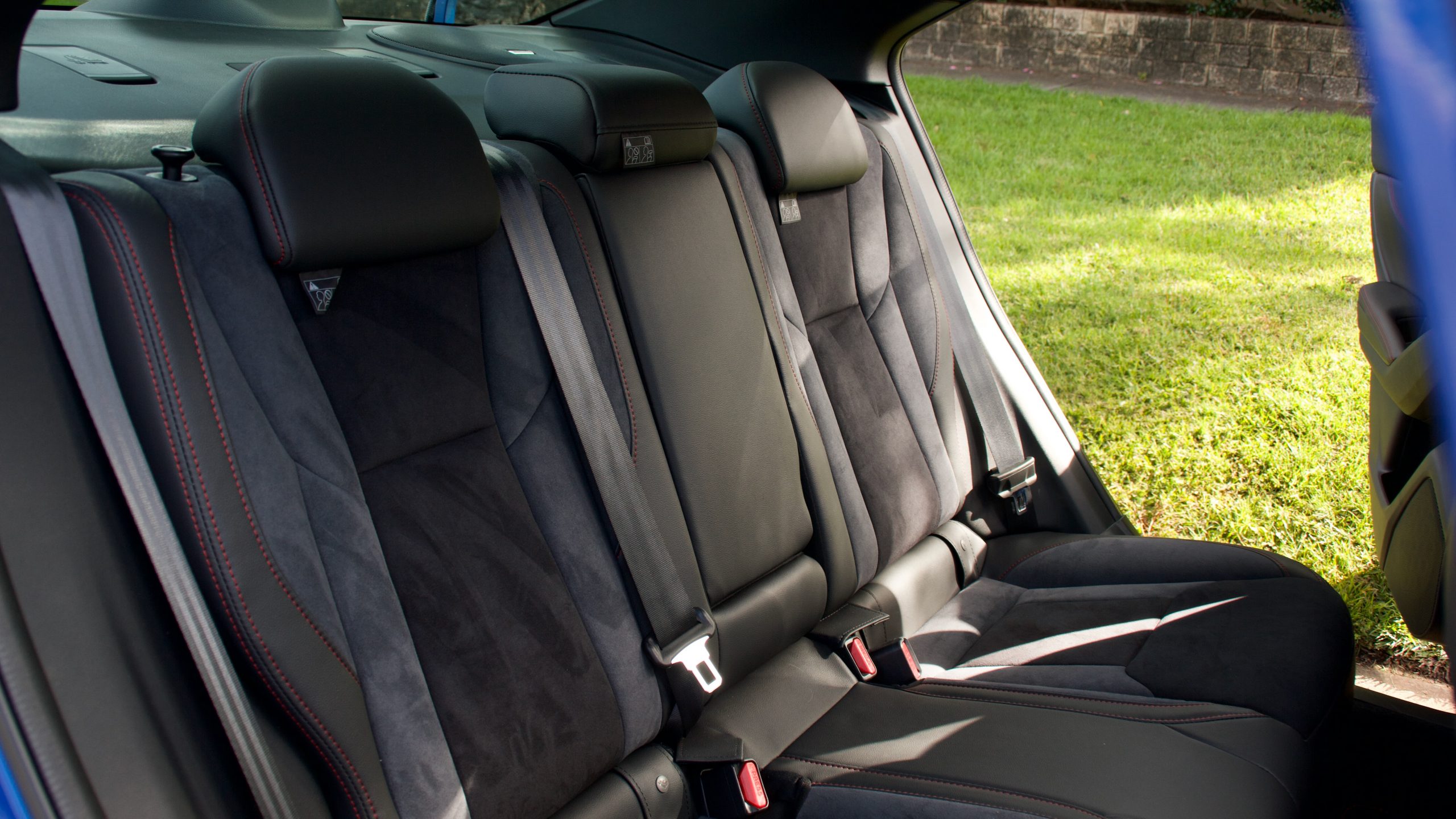
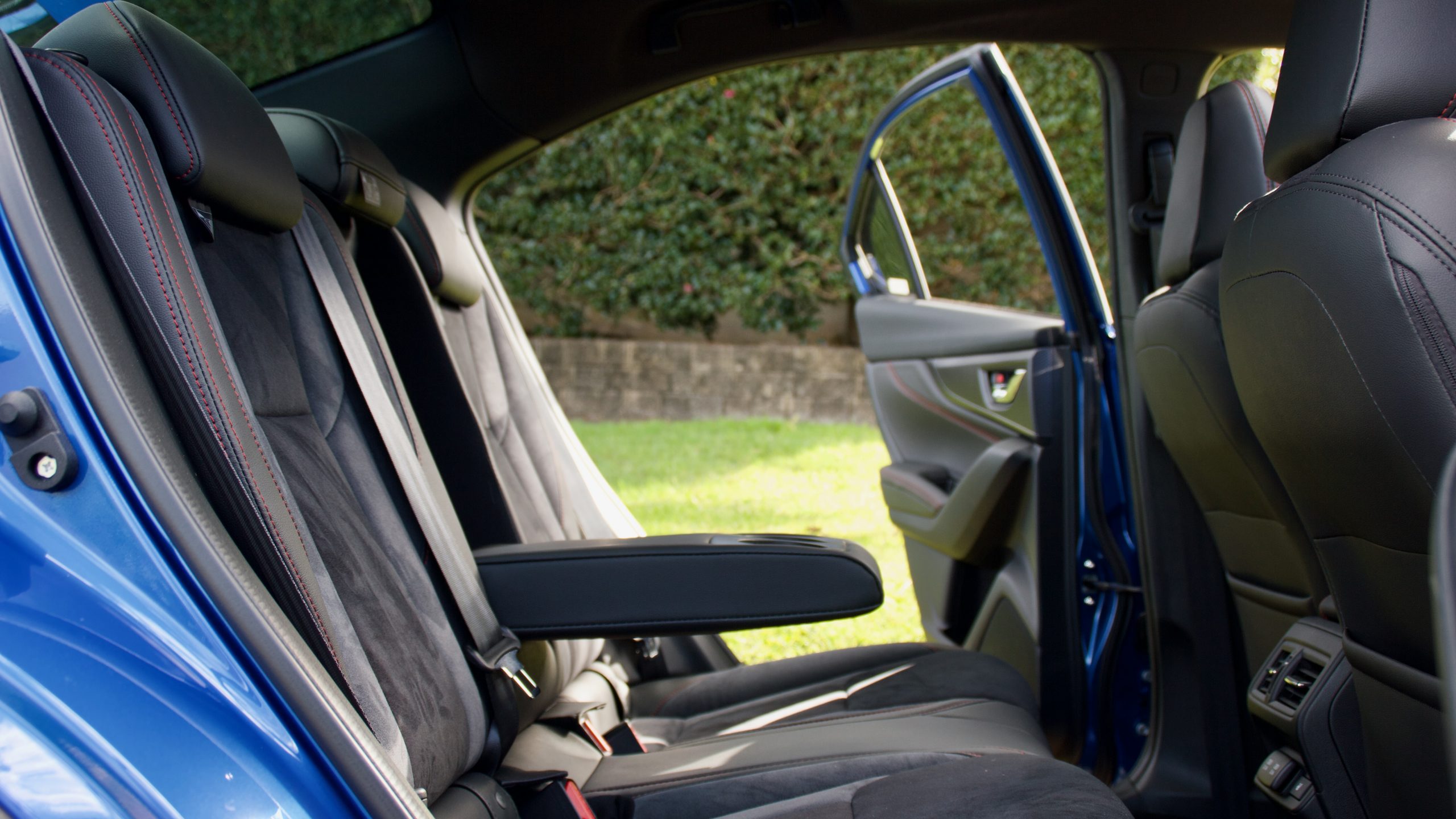
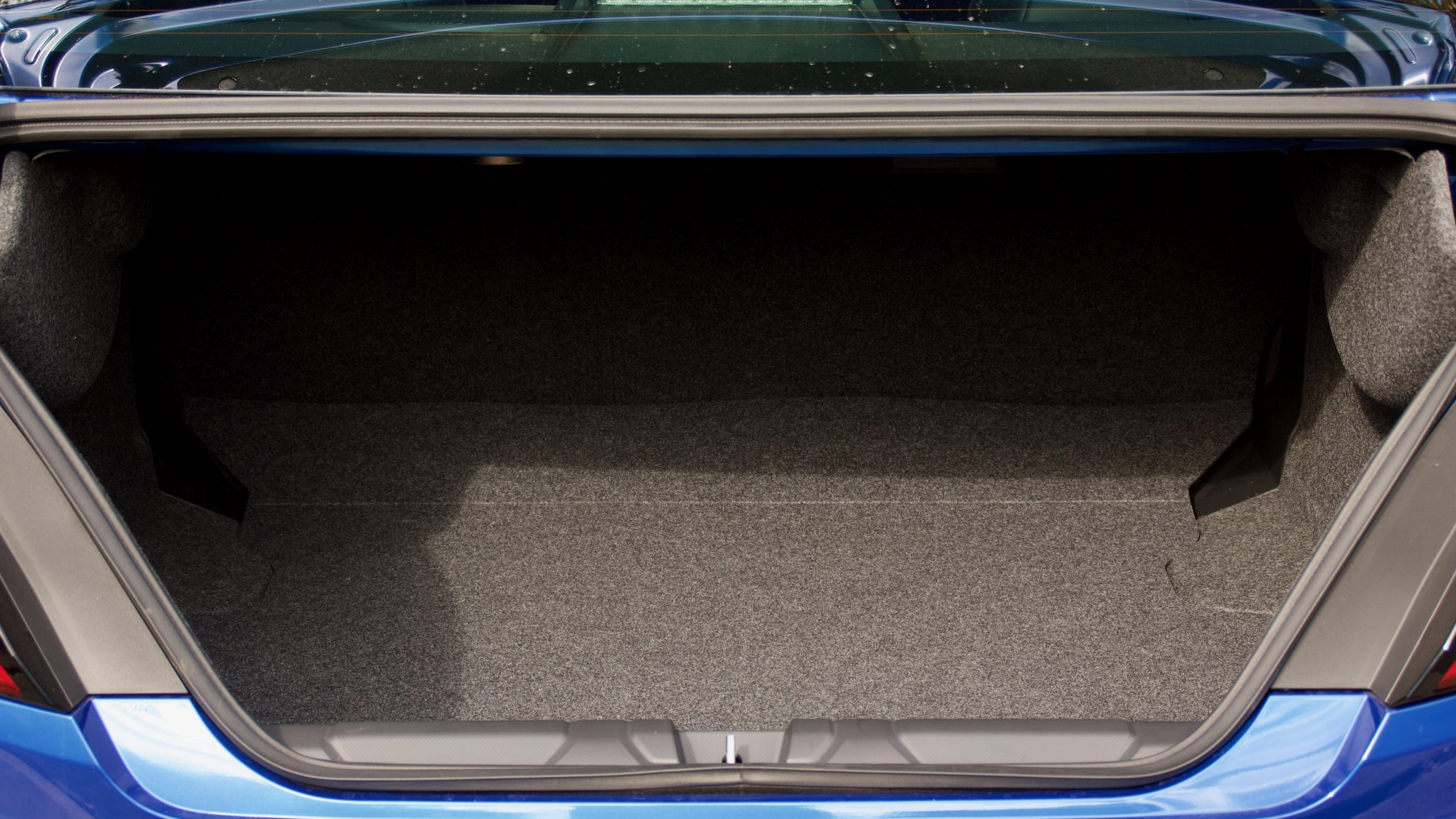
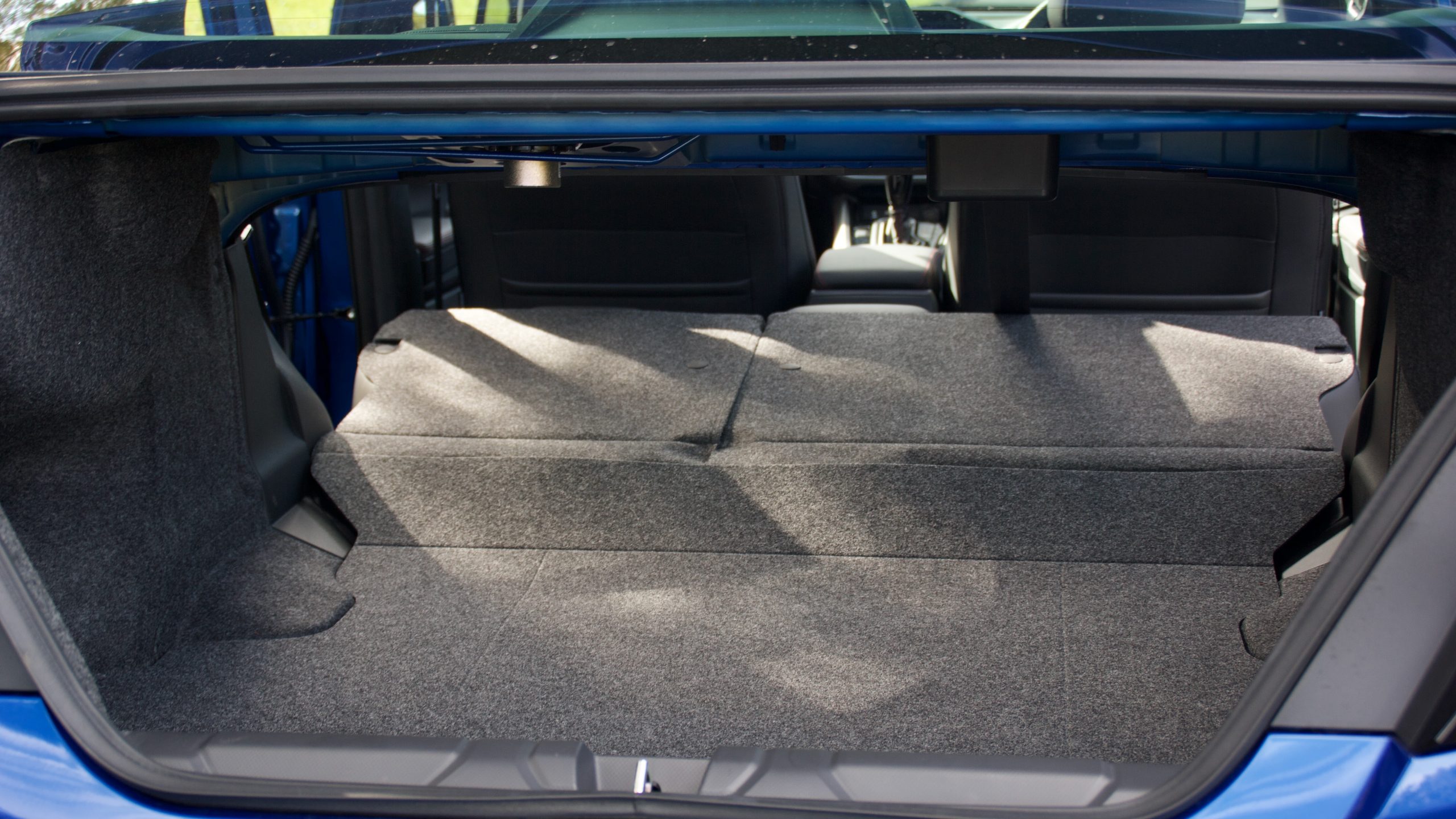
The boot of the WRX tS measures a reasonable 411-litres, with the ability to fold the rear seats down helping increase the available space – an i30 N sedan’s boot is slightly larger at 464L, but its rear seat brace makes it difficult when folding the seats. Aside from a space saver spare underneath the boot floor and space-hungry gooseneck hinge arms for the boot lit, the boot has little in the way of features – with no hooks, nets tie down points,.
Service & Warranty: 7/10
Like all other new Subaru products in Australia, the 2022 Subaru WRX tS comes with a five-year/unlimited km warranty with only 12 months of roadside assistance. Interestingly, Subaru has upgraded the WRX’s service intervals to once-yearly/every 15,000km – a big difference from previous six-monthly service intervals in the Subaru range.
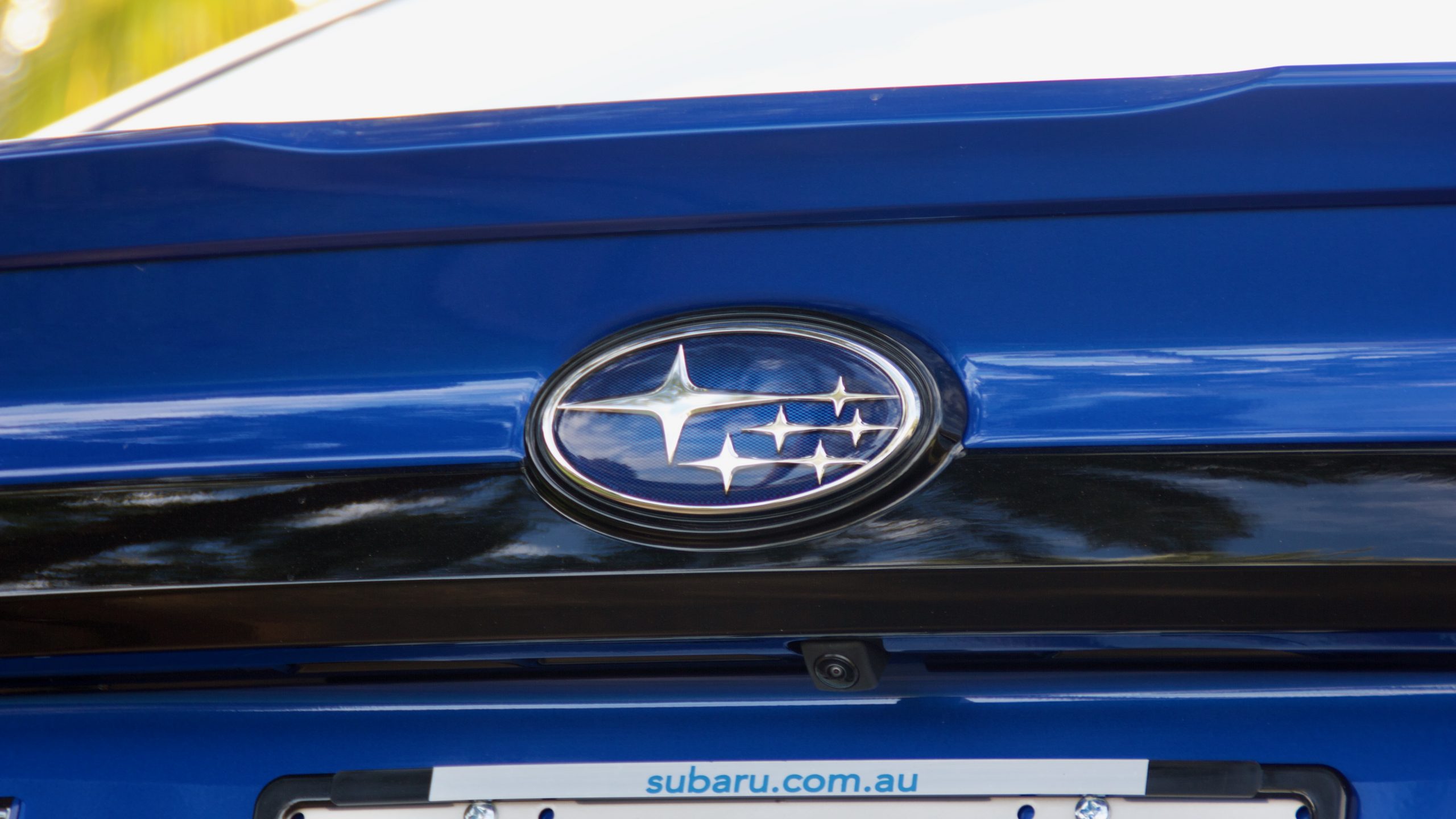
Servicing the WRX tS costs $2,365.74 ($473 per service) over five years/75,000km. That makes the WRX not cheap to service, but more affordable than past models. Hyundai offers a same length warranty as Subaru, but its roadside assistance can be had up to five years in total. Servicing the i30 N sedan over five years costs $1,675 ($335 per service), but it does have less convenient 10,00km service intervals.
The 2022 Subaru WRX tS Sedan DiscoverAuto Rating: 8.0/10
The 2022 Subaru WRX tS Sedan is a genuinely interesting car for a few reasons. Its newfound maturity and comfort mean that it takes on a different persona to the last generations of the WRX name – it certainly looks like a WRX, but how it drives in tS spec is certainly more like a Liberty GT (/Legacy, depending on where you’re from in the world) with great all-round ability. But does it make you want to go out for a Sunday drive? Well, yes, but not as much as the previous car.
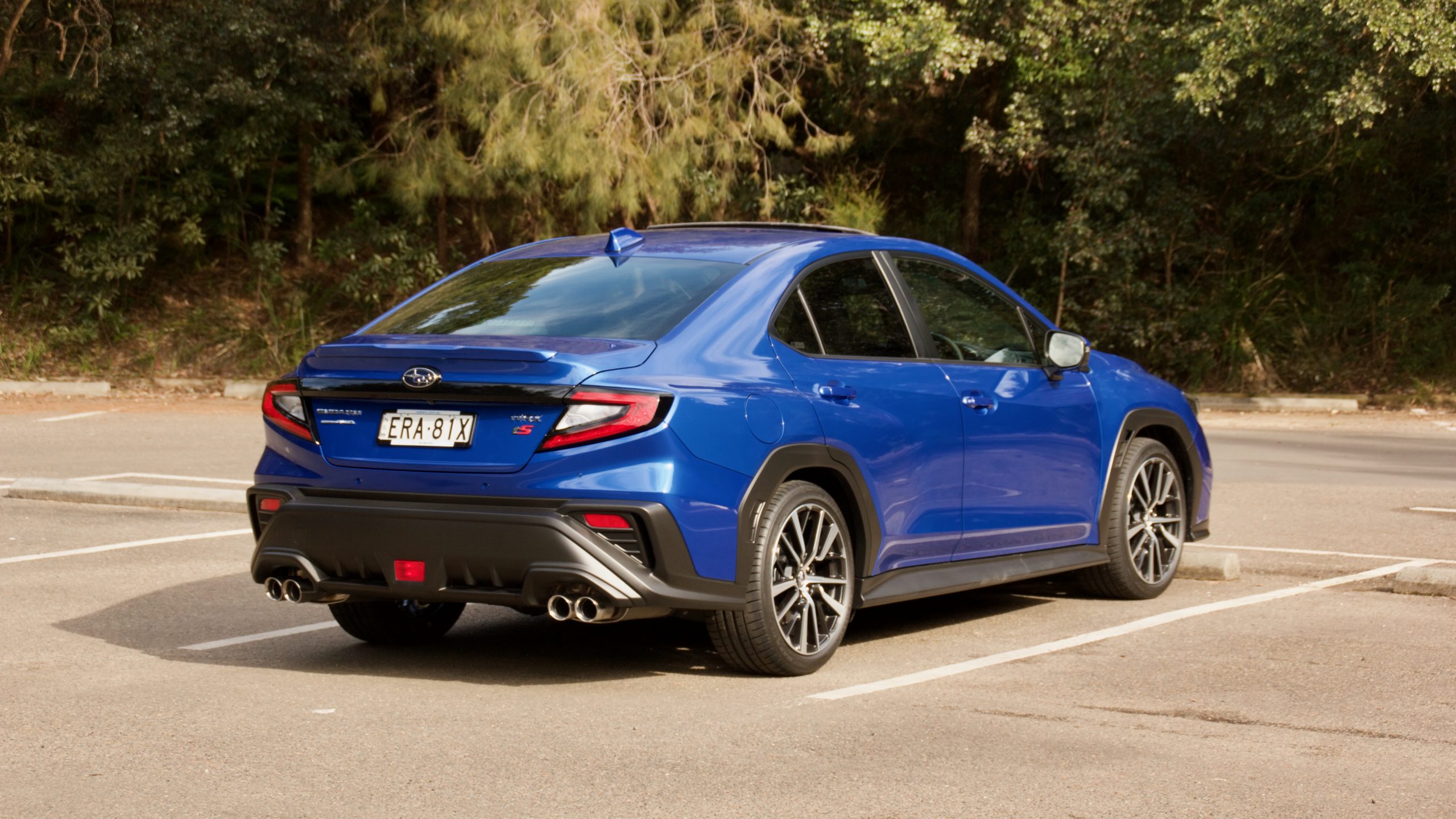
There’s no question that it’s a good car. It’s practical, good to drive, quick, filled with equipment, comfortable and now, thanks to longer service intervals, more convenient and cost effective than Subarus of the past. But when rivals like the Hyundai i30 N sedan are just as practical but with a harder, more sporting and arguably more exciting edge, you have to wonder why Subaru has moved to a softer car with this generation WRX. But in a world full of SUVs and with regular passenger car sales disappearing, we’re very thankful that it still exists.
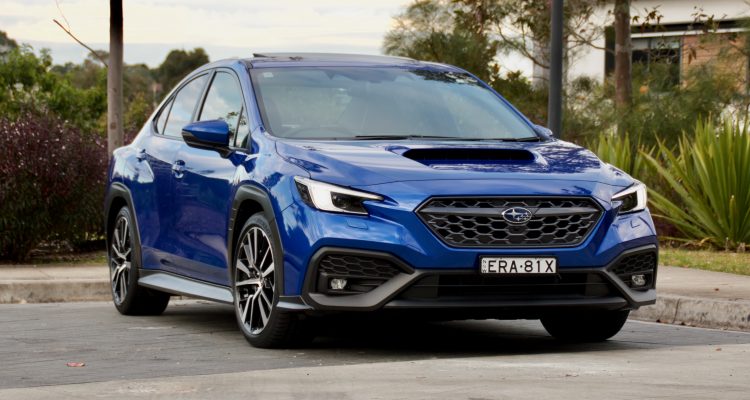
Sounds more like an RS rather than a WRX. I dare say that the traditional WRX buyer is much more likely to check for road reports / reviews such as this one. And be swayed by them.
Yep, that’s exactly what I said in my review – it feels more like a WRX-Line than a WRX should. I’m in the WRX RS manual this week and it feels better, so stay tuned for that review.
Thanks for reading!
Jake Williams